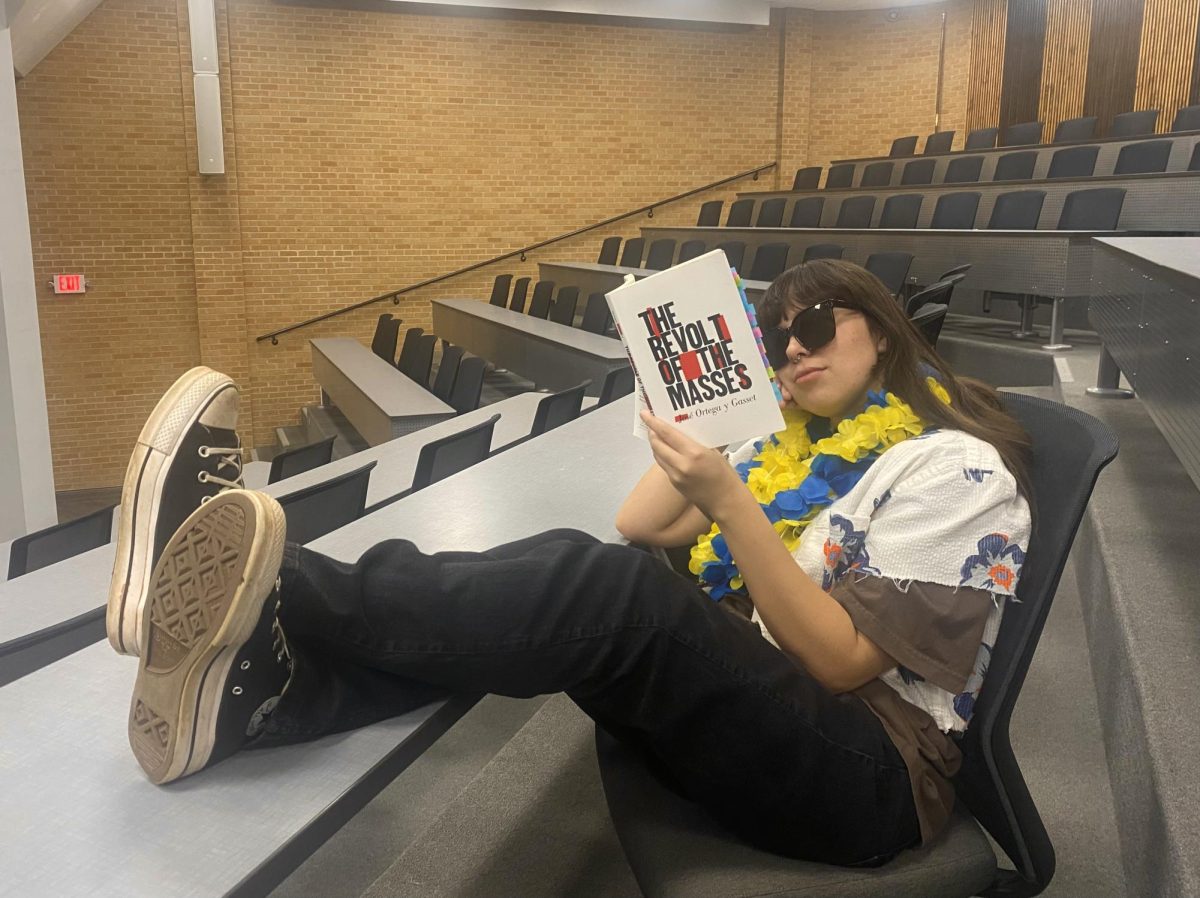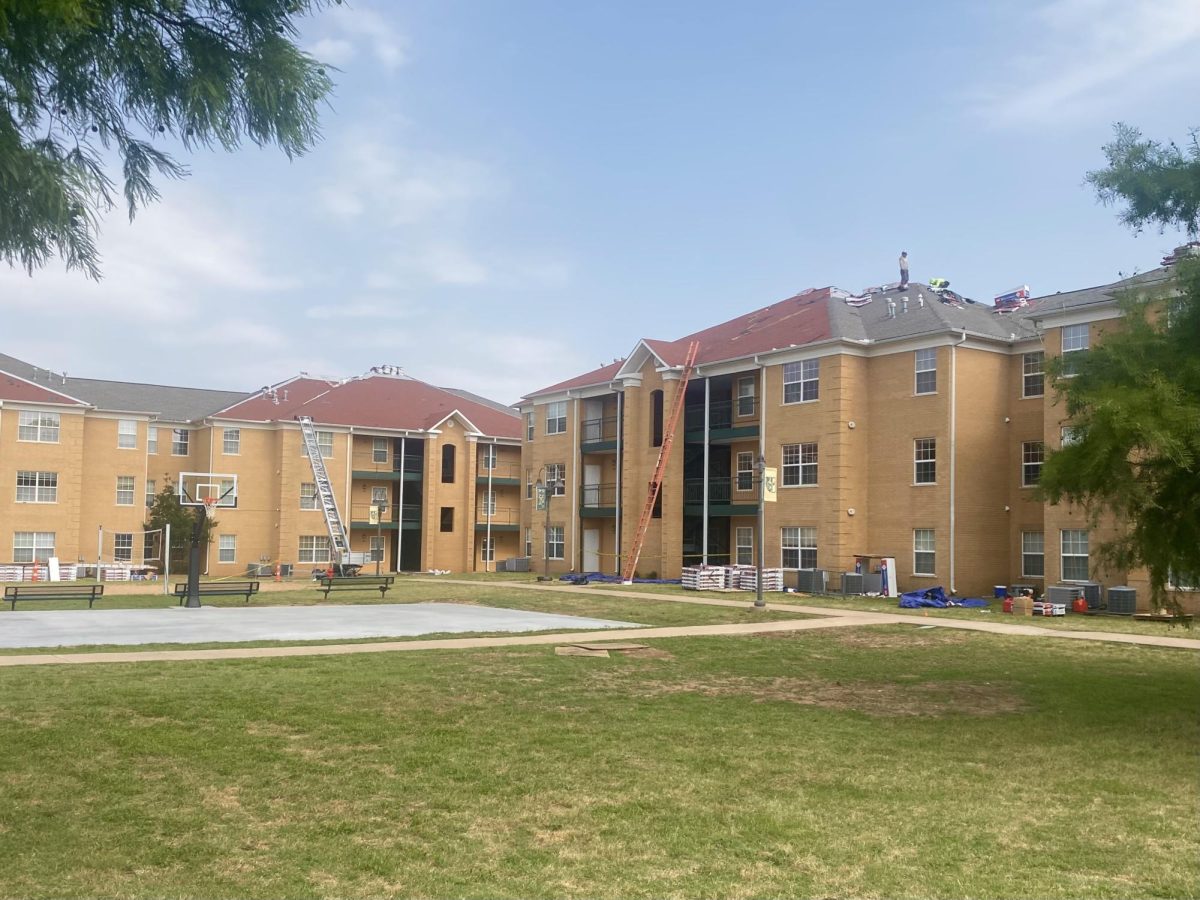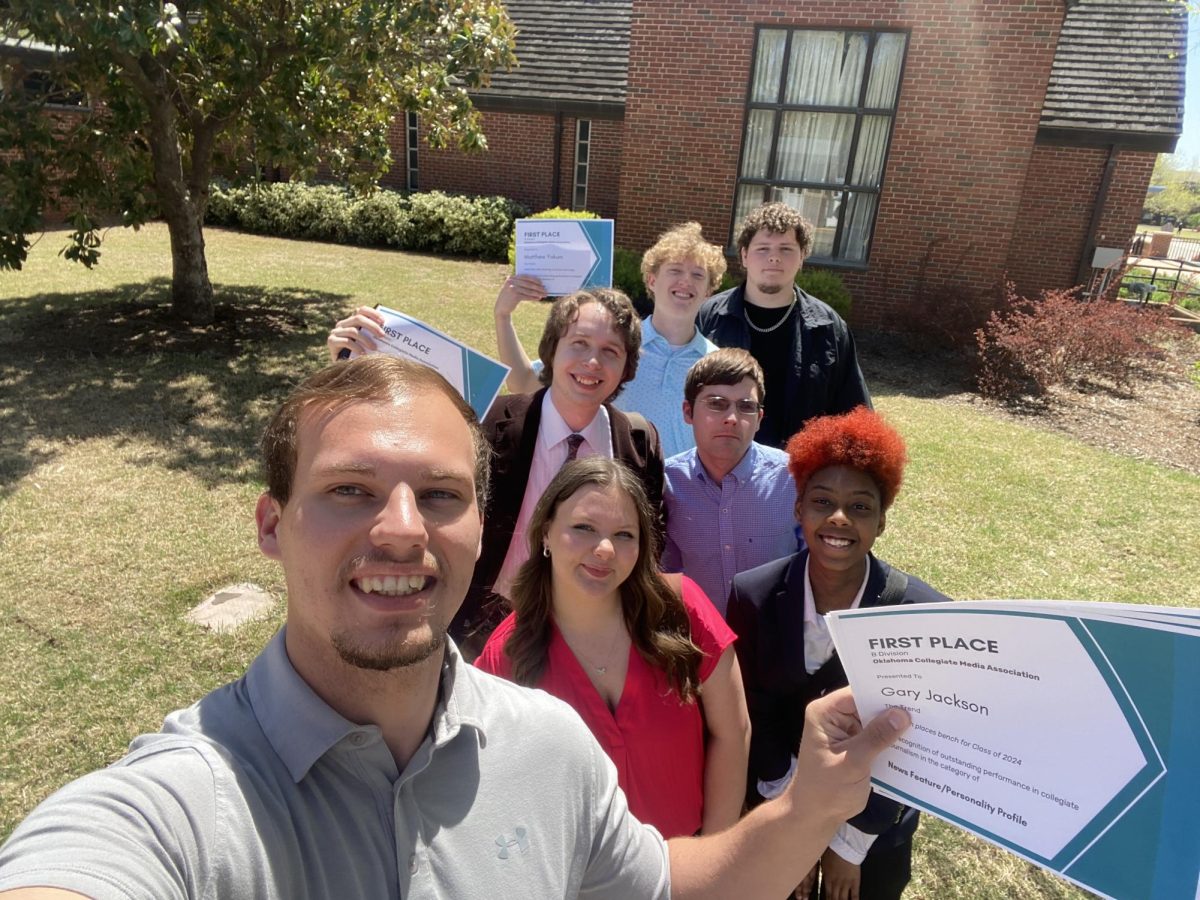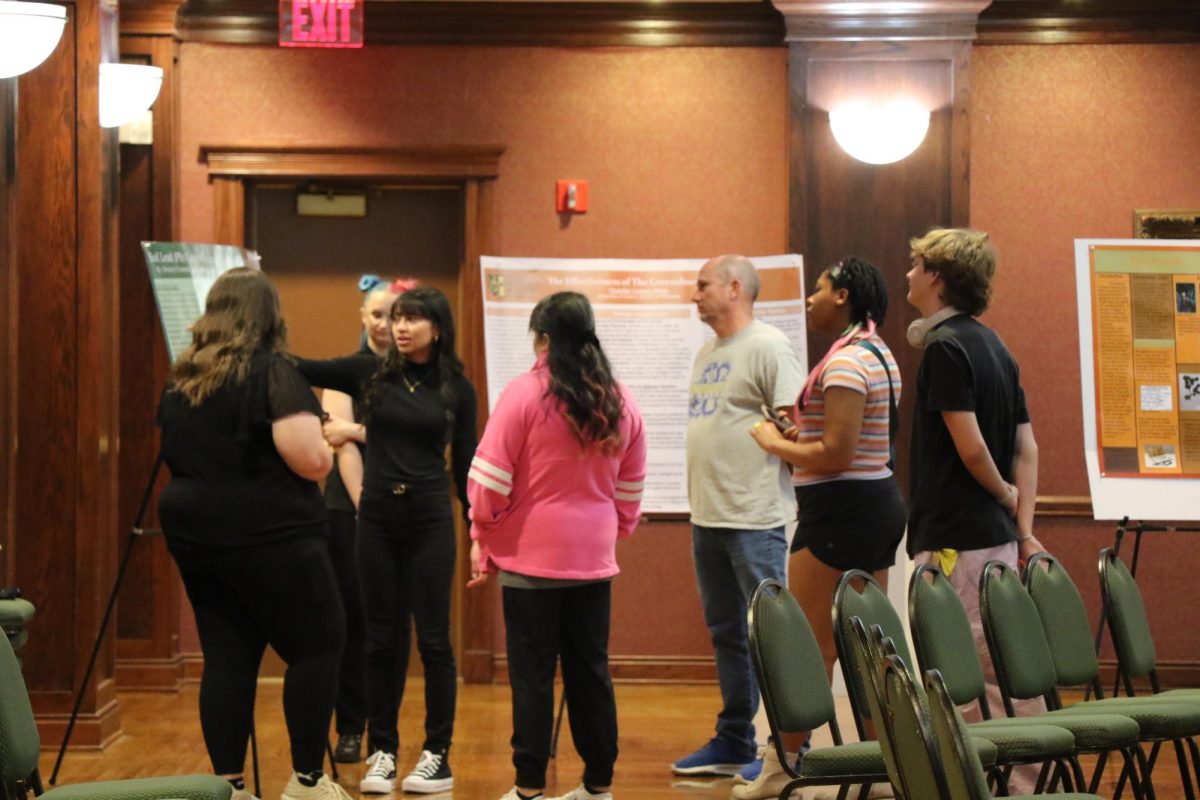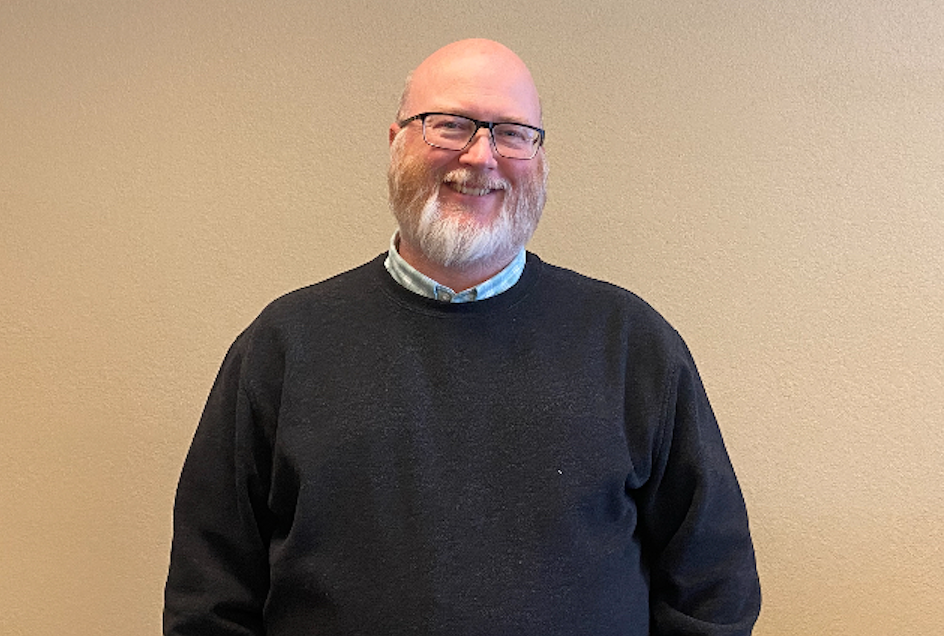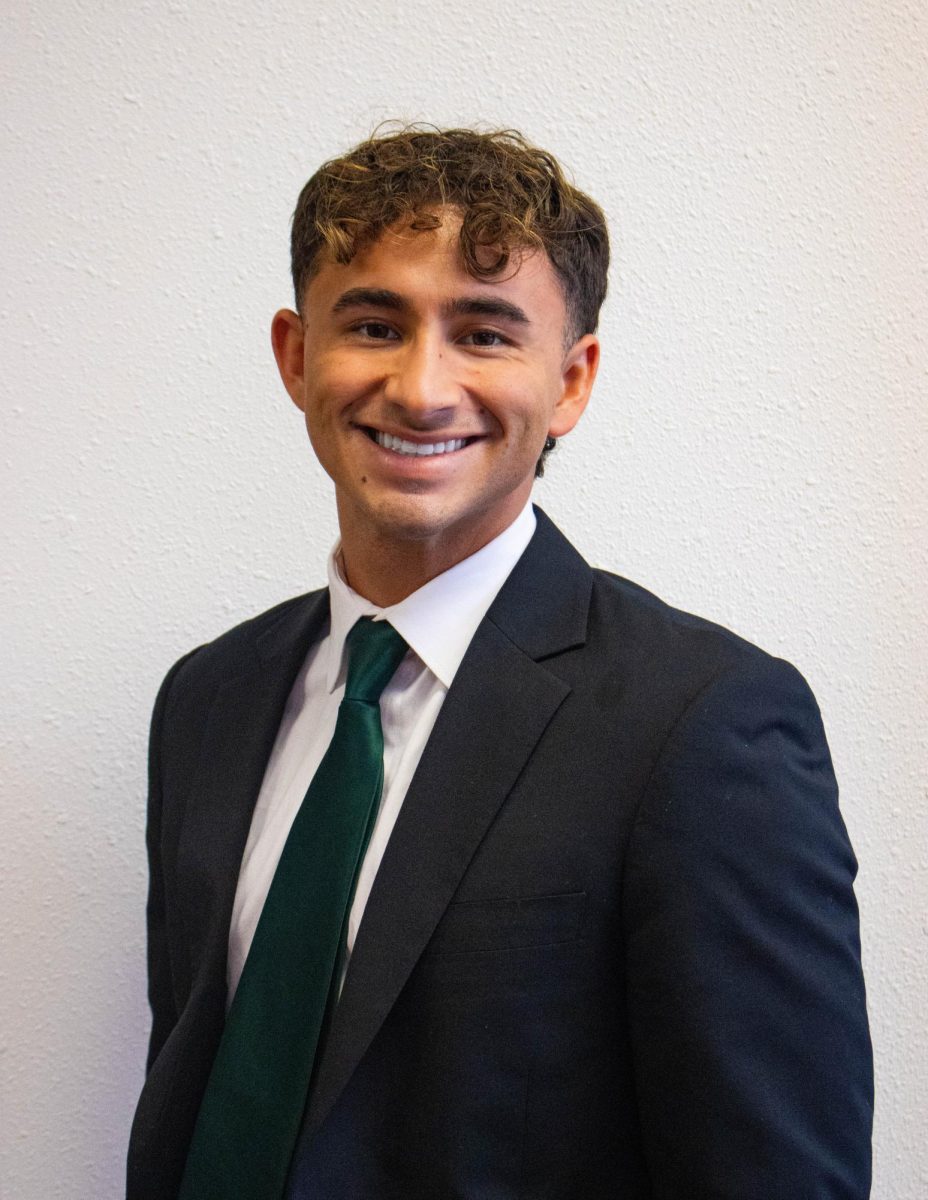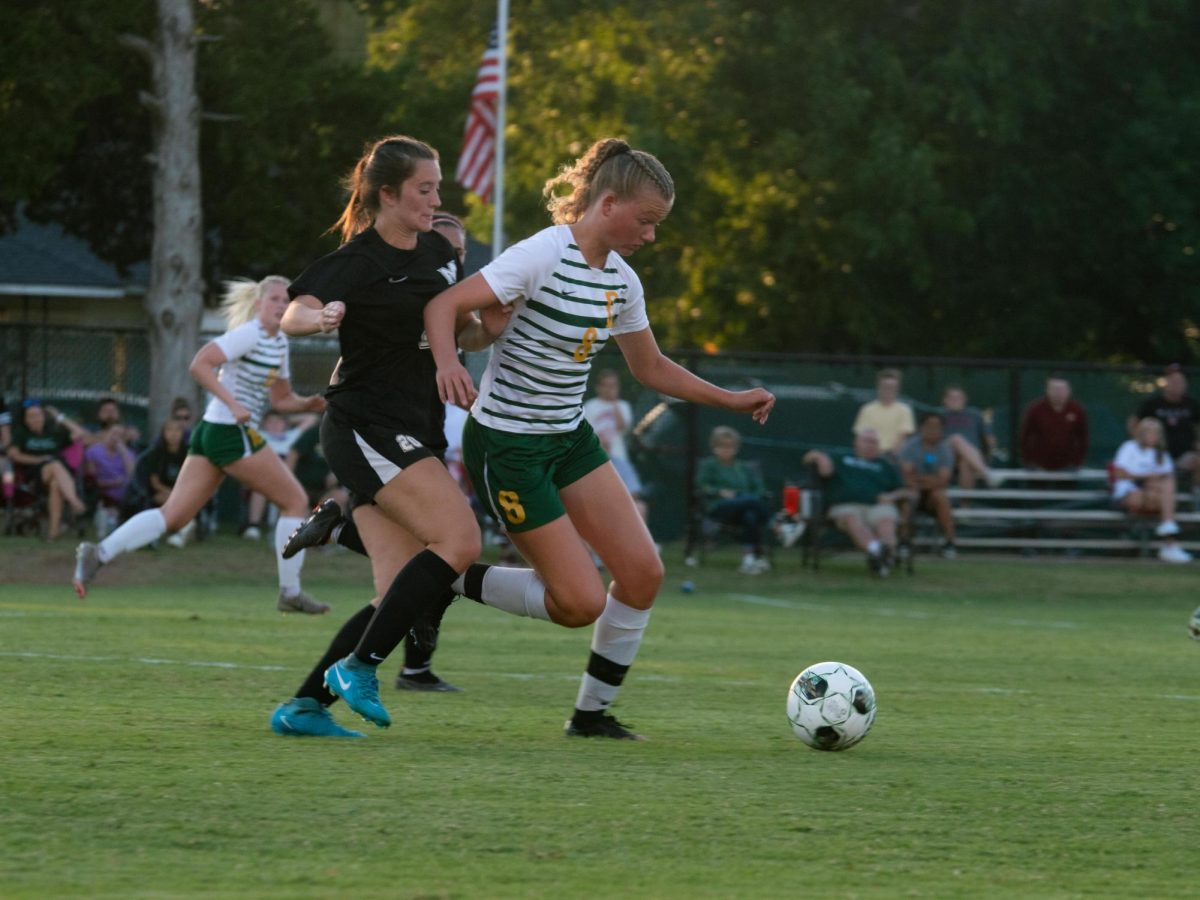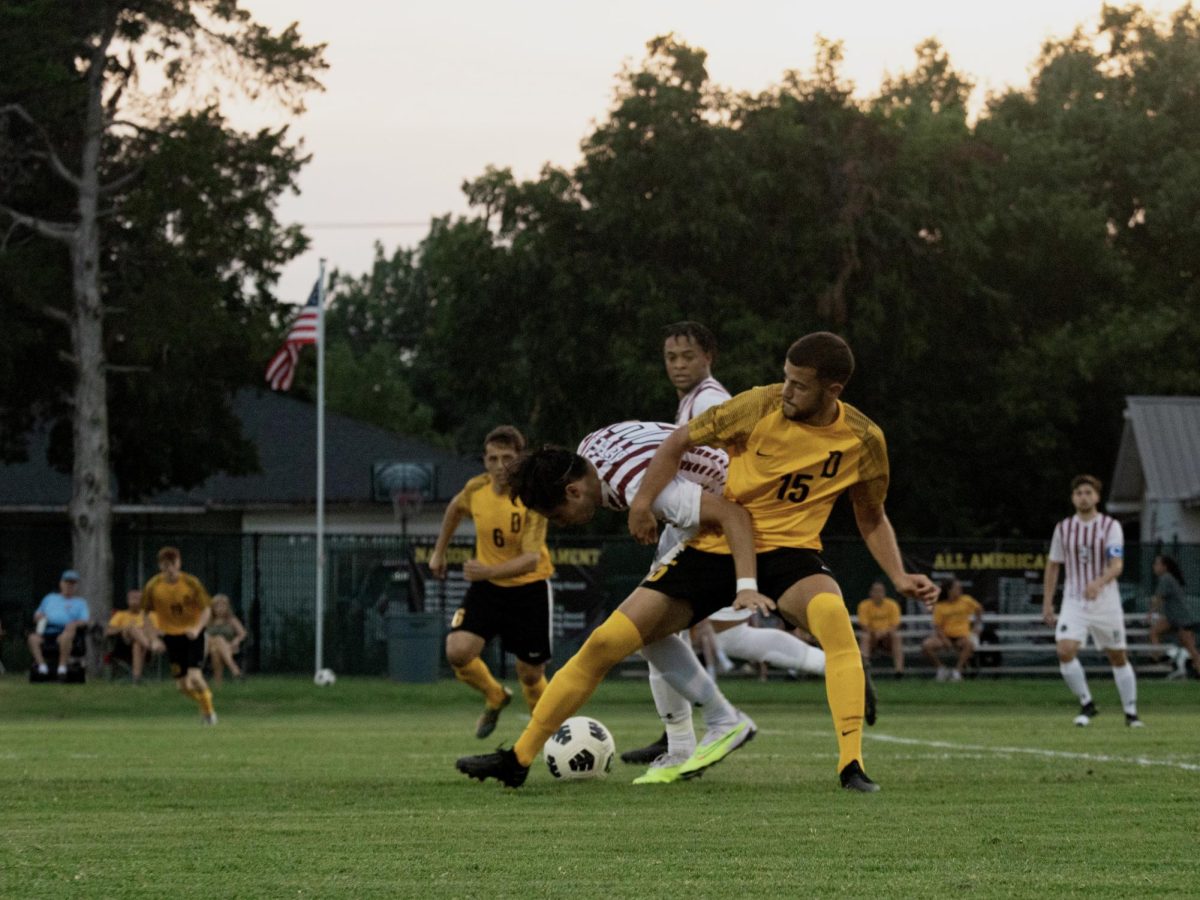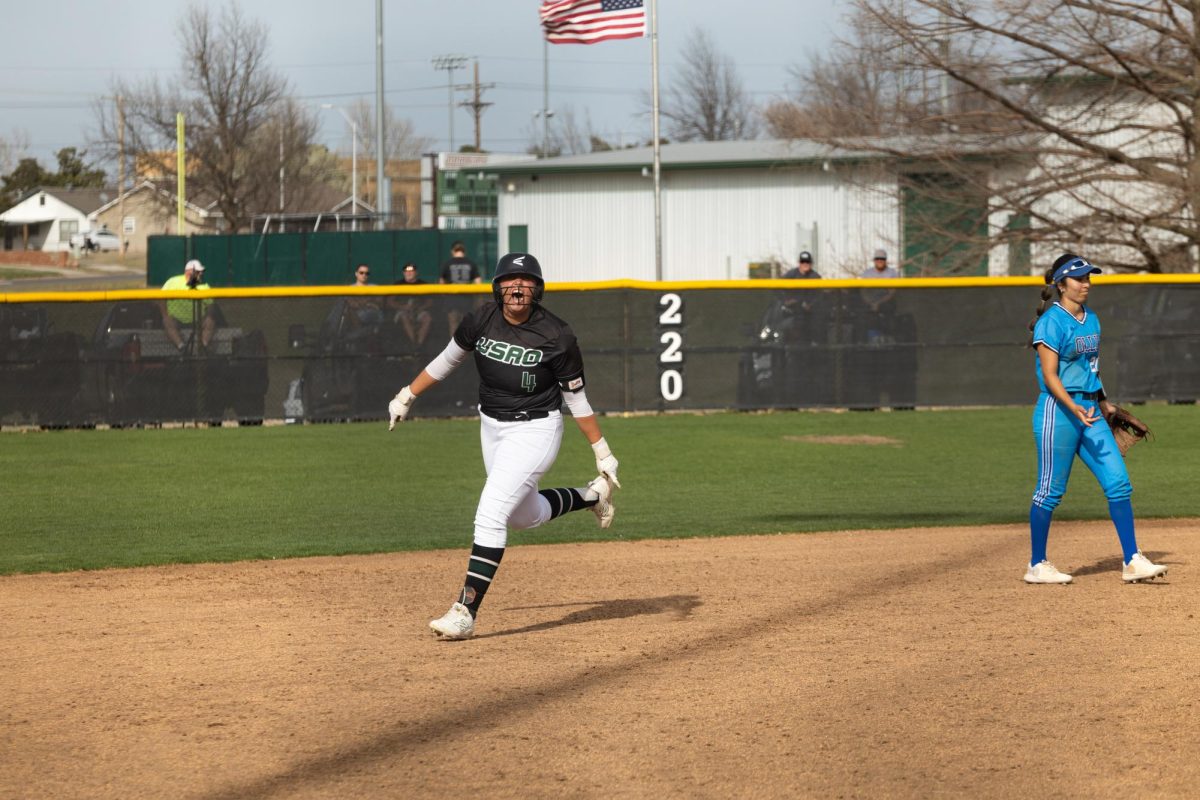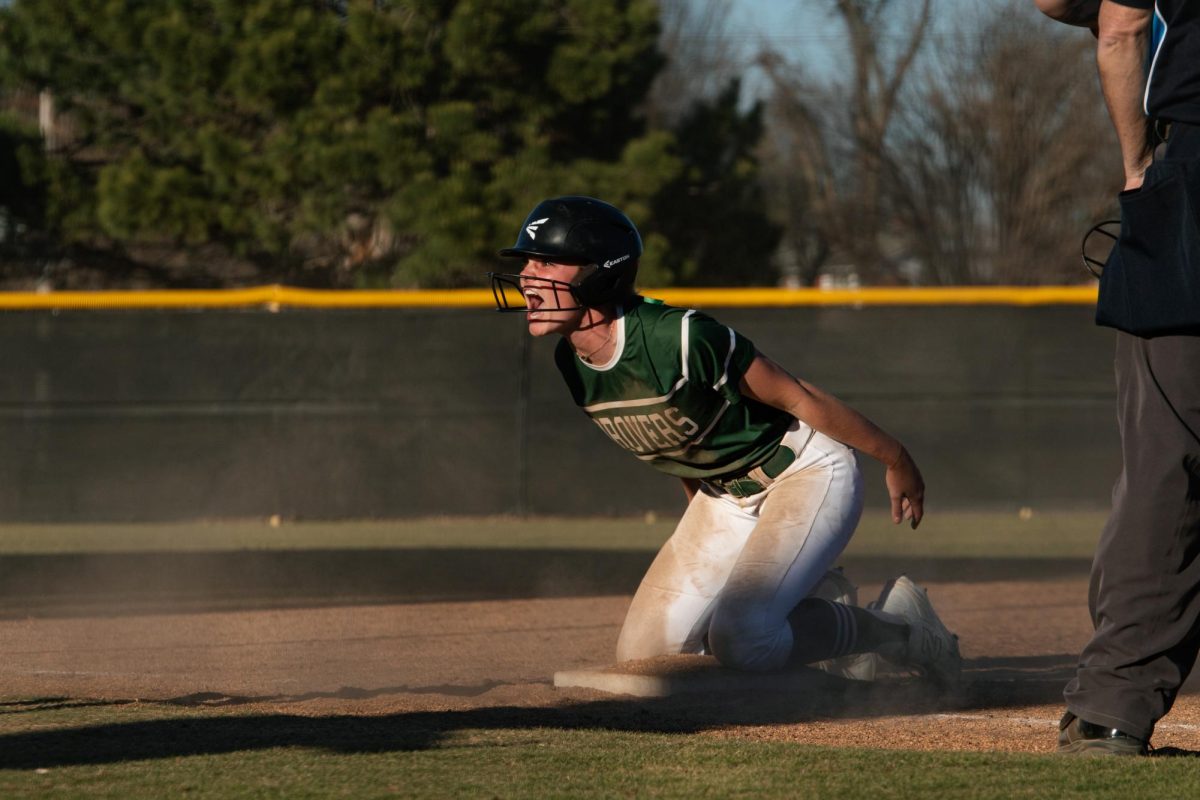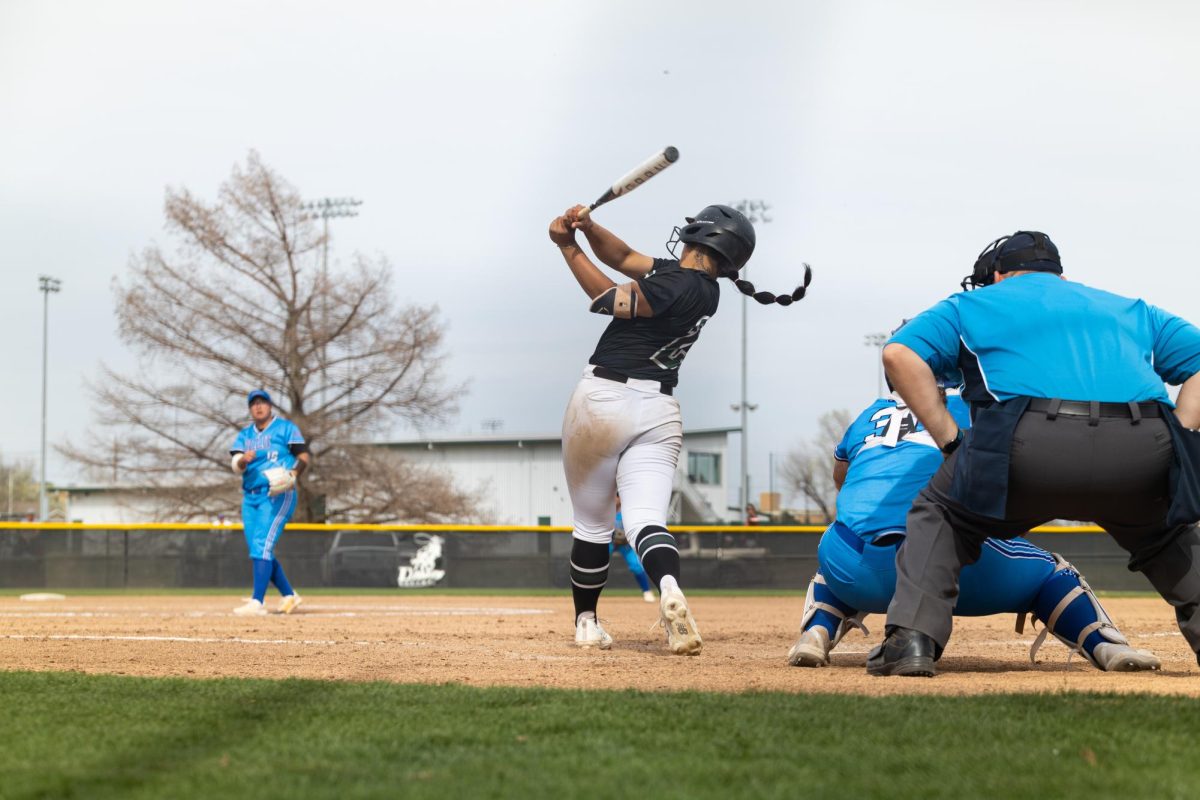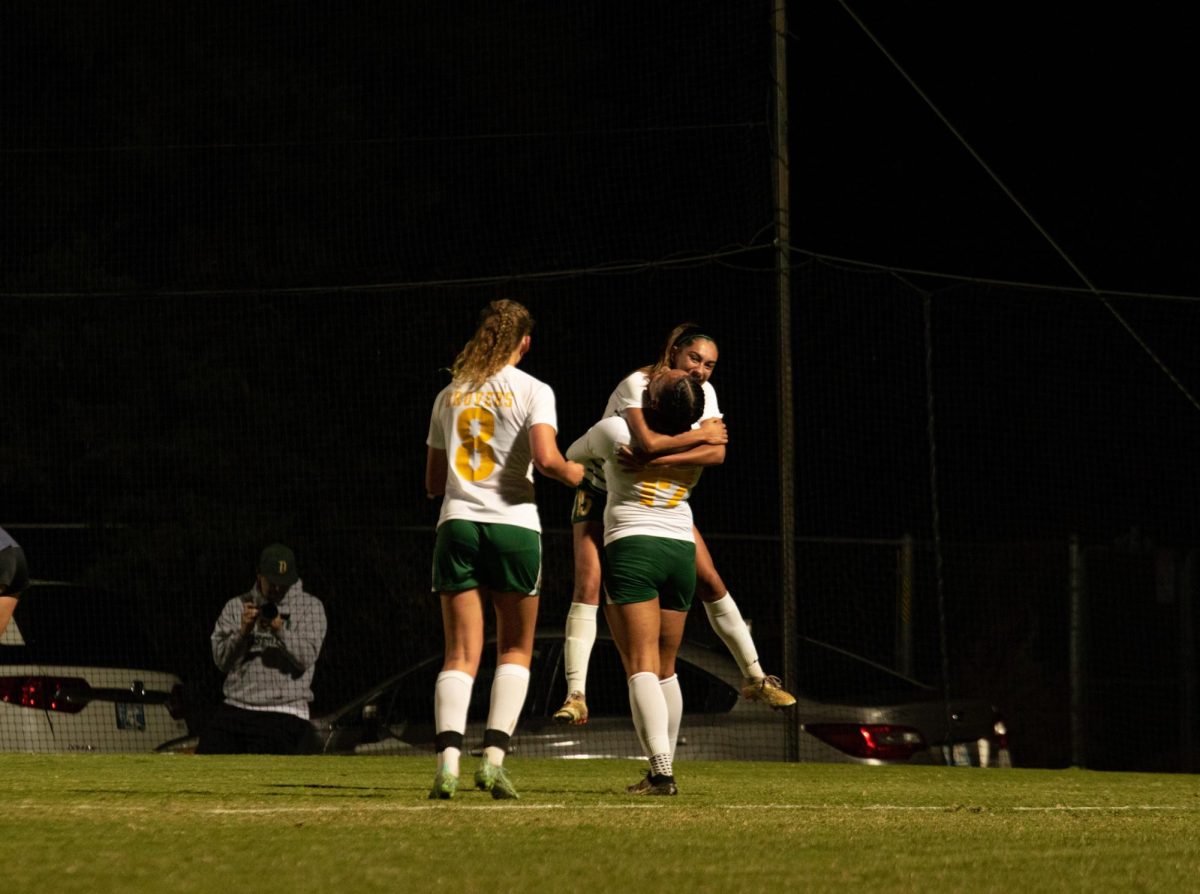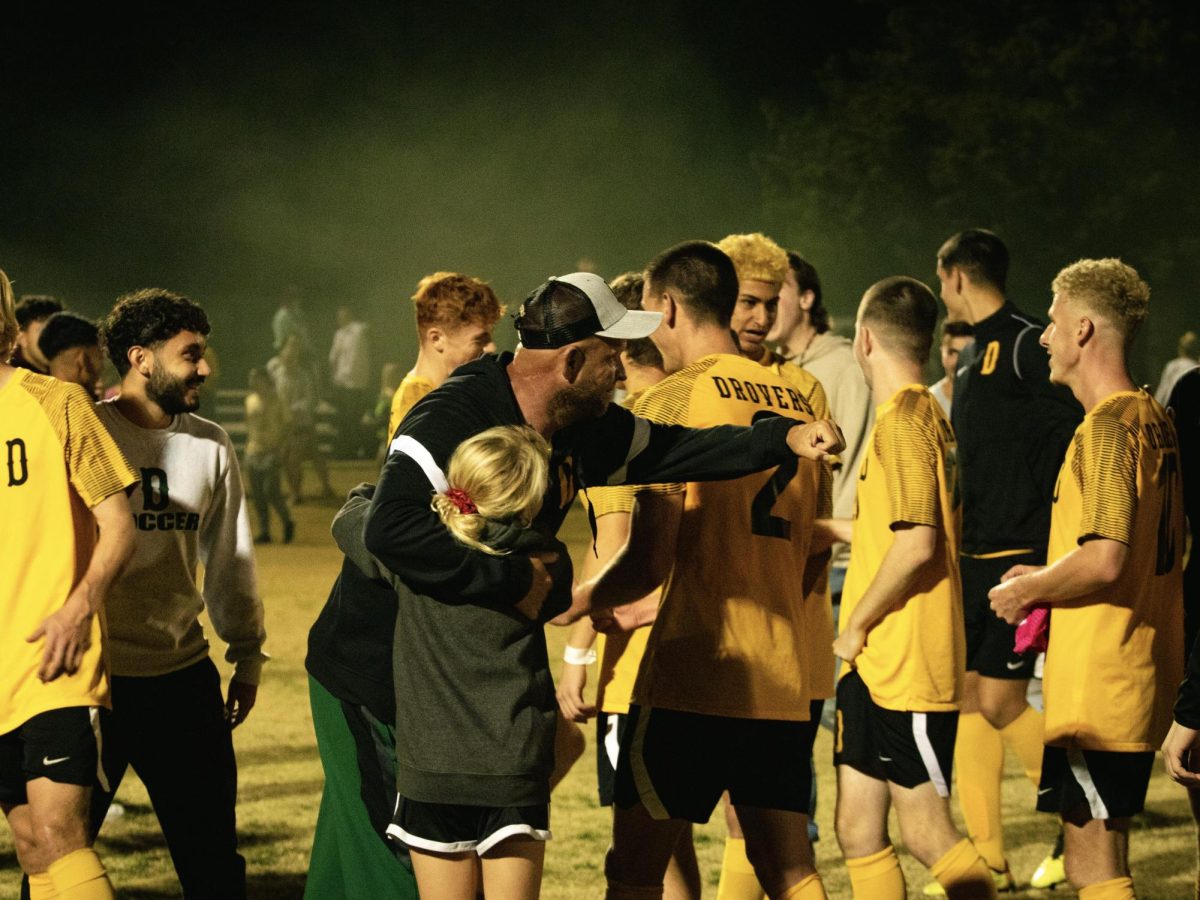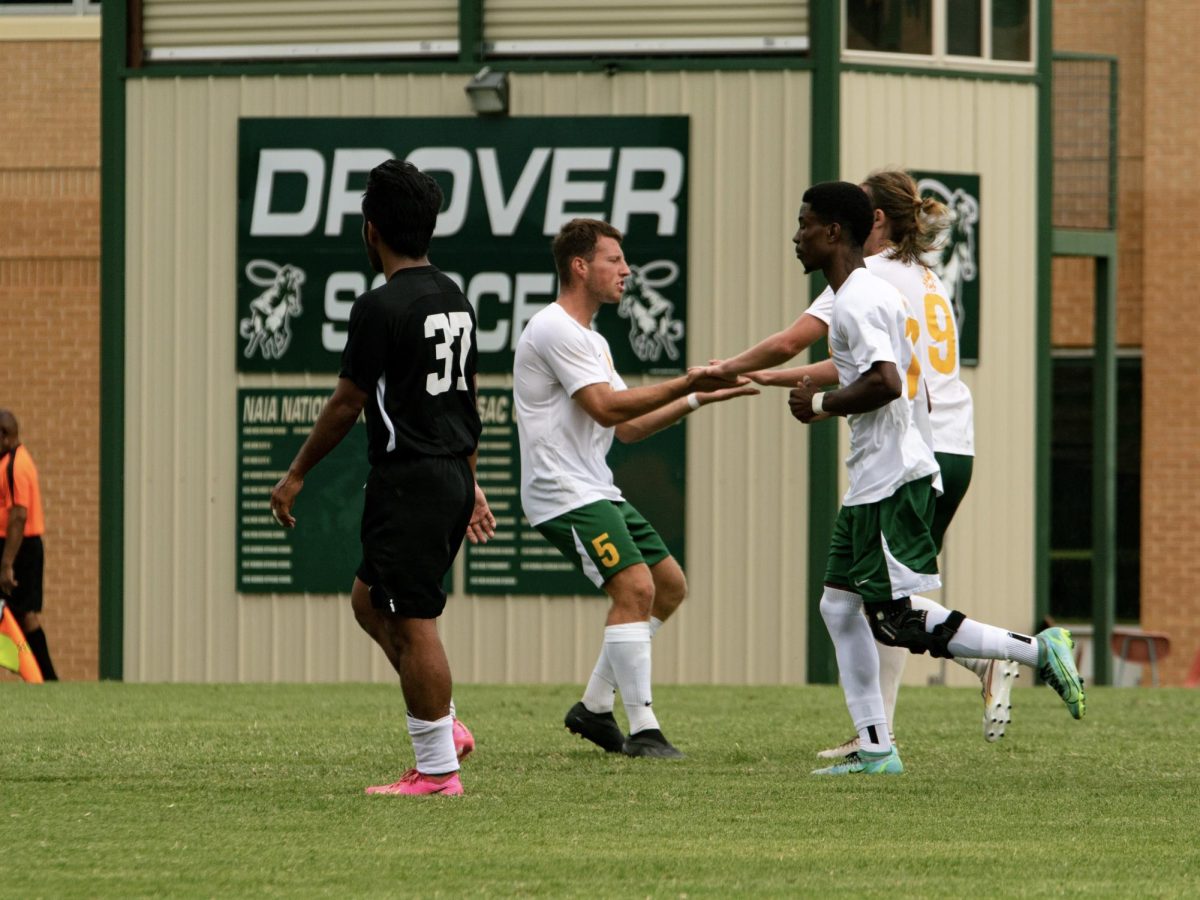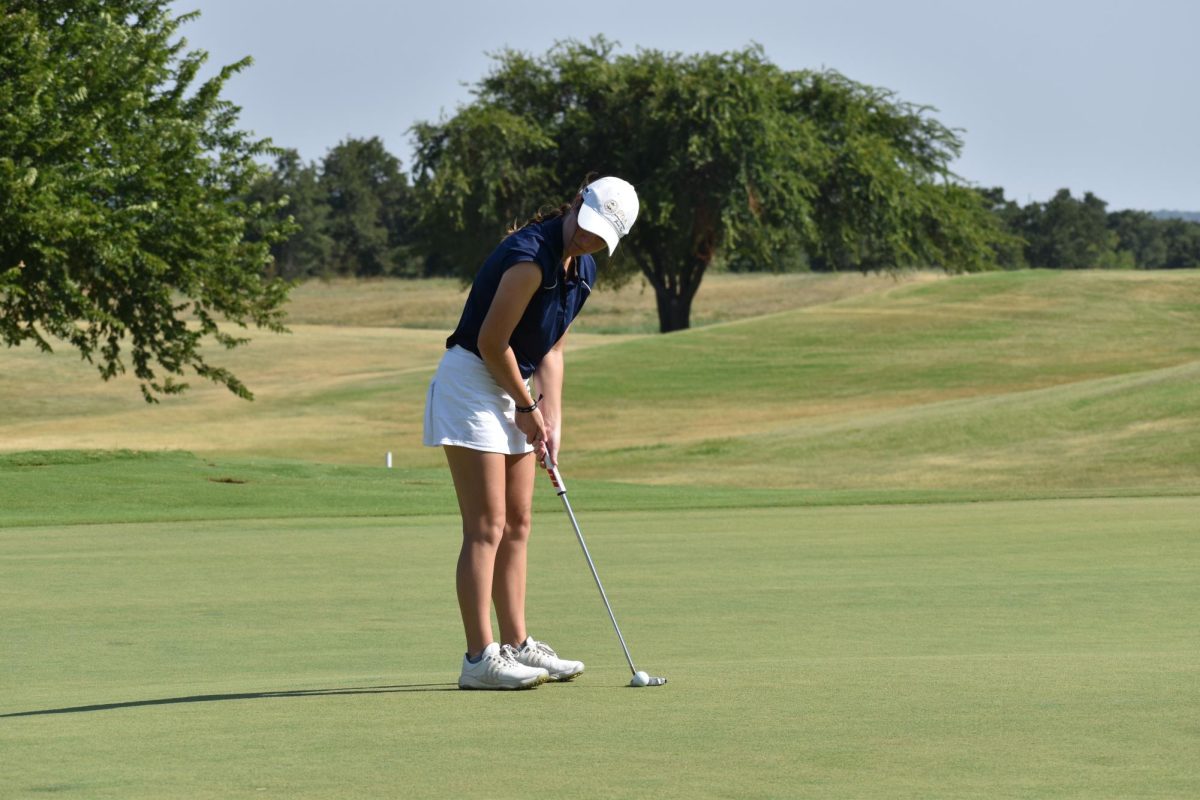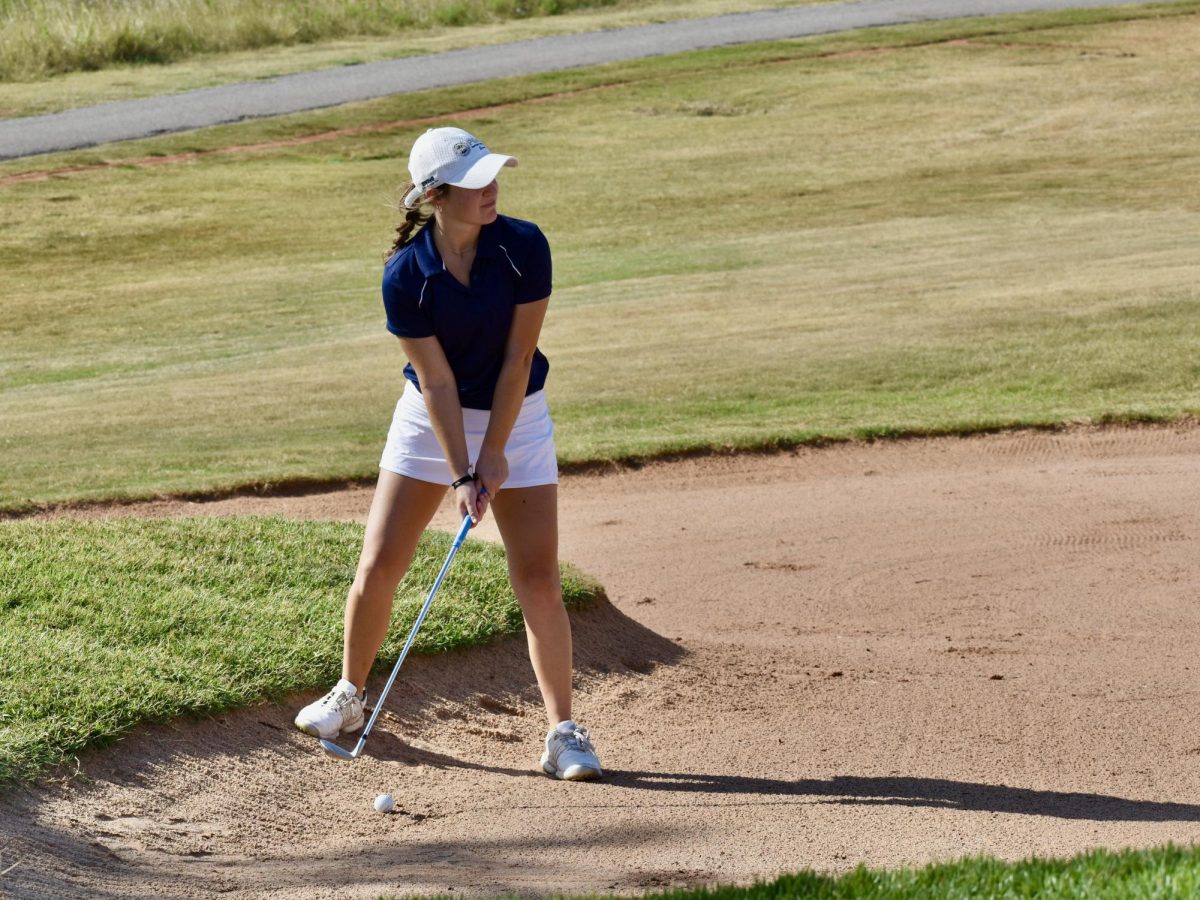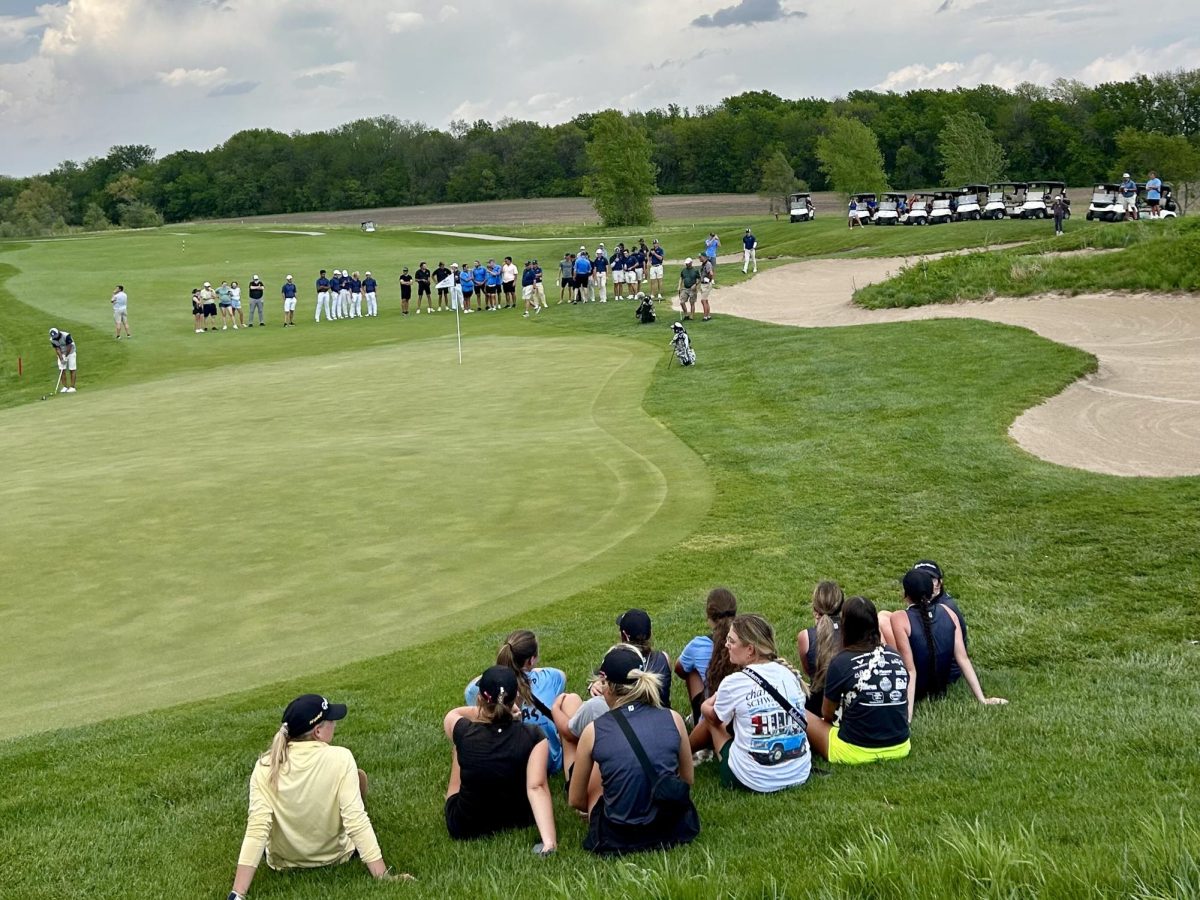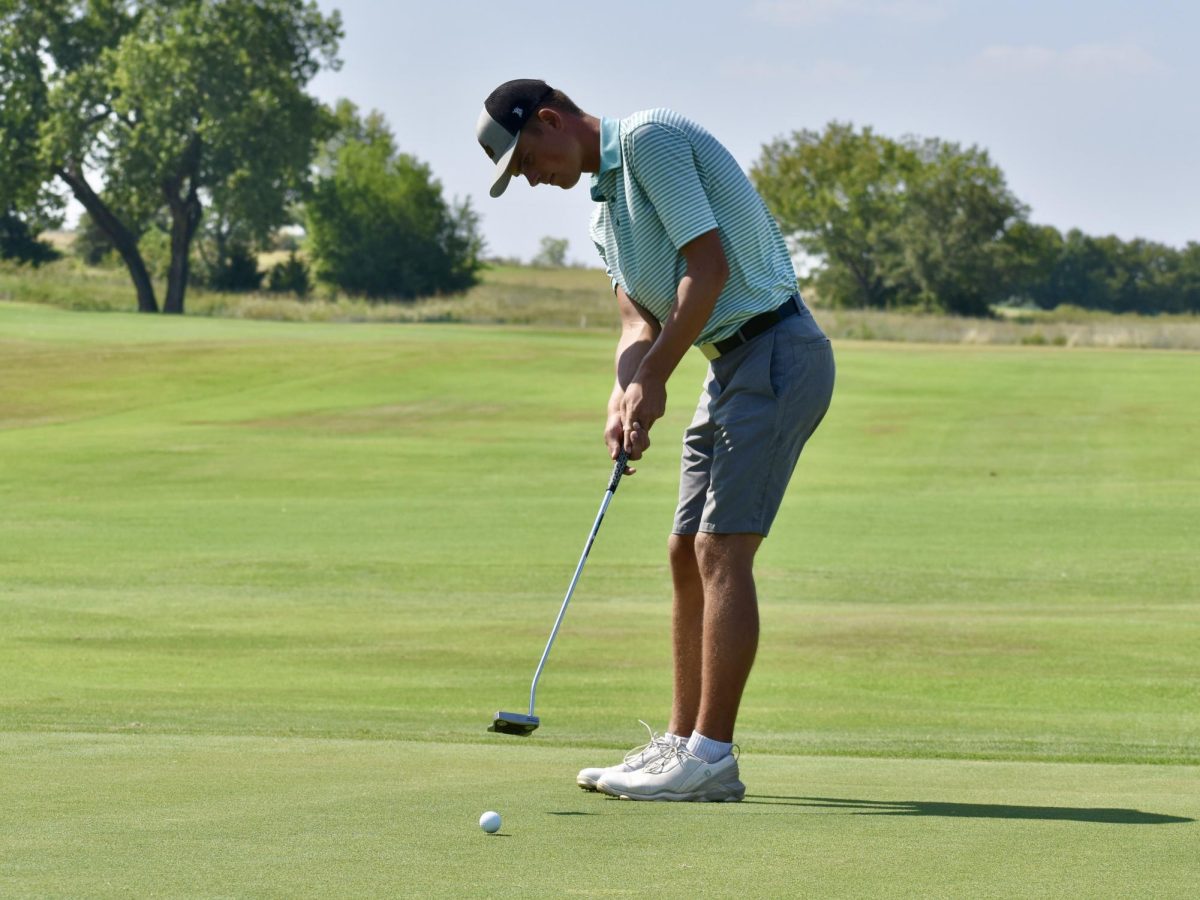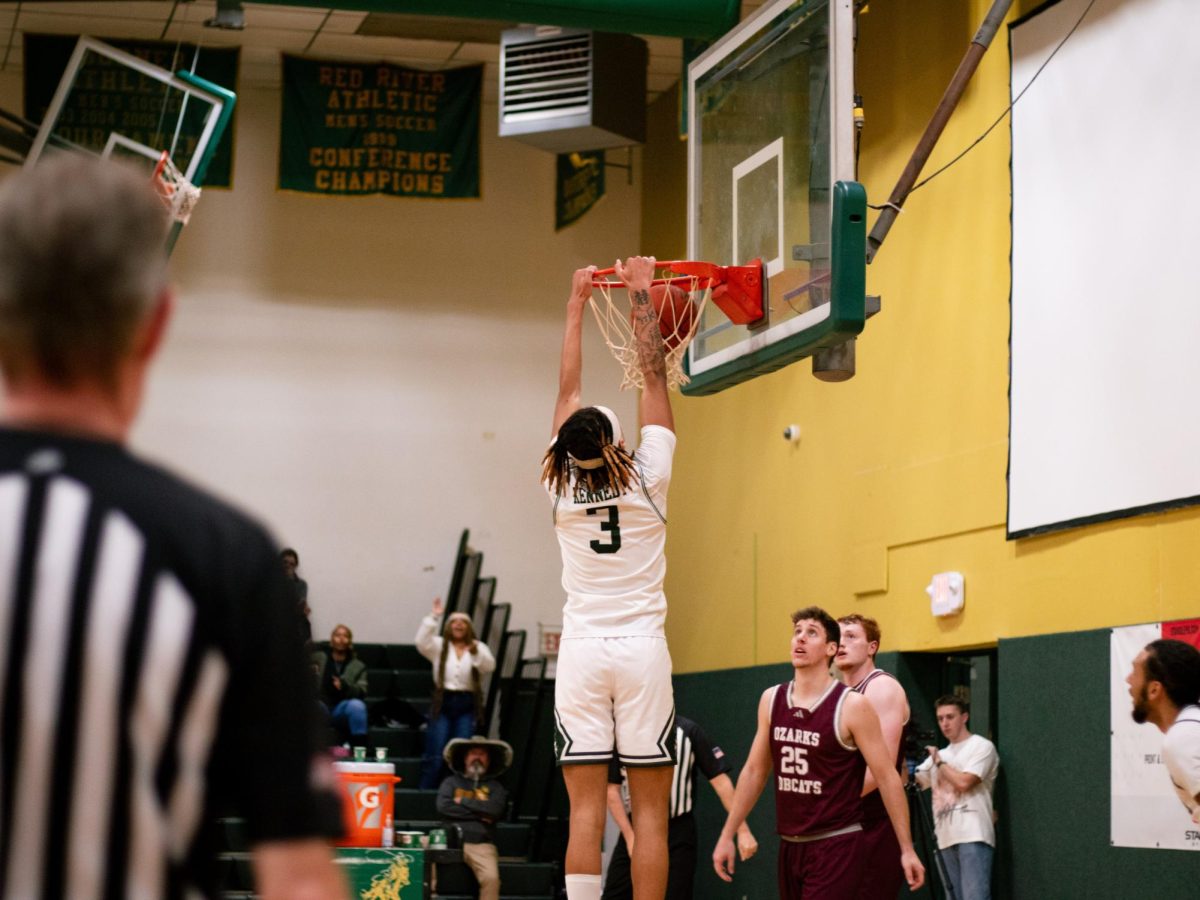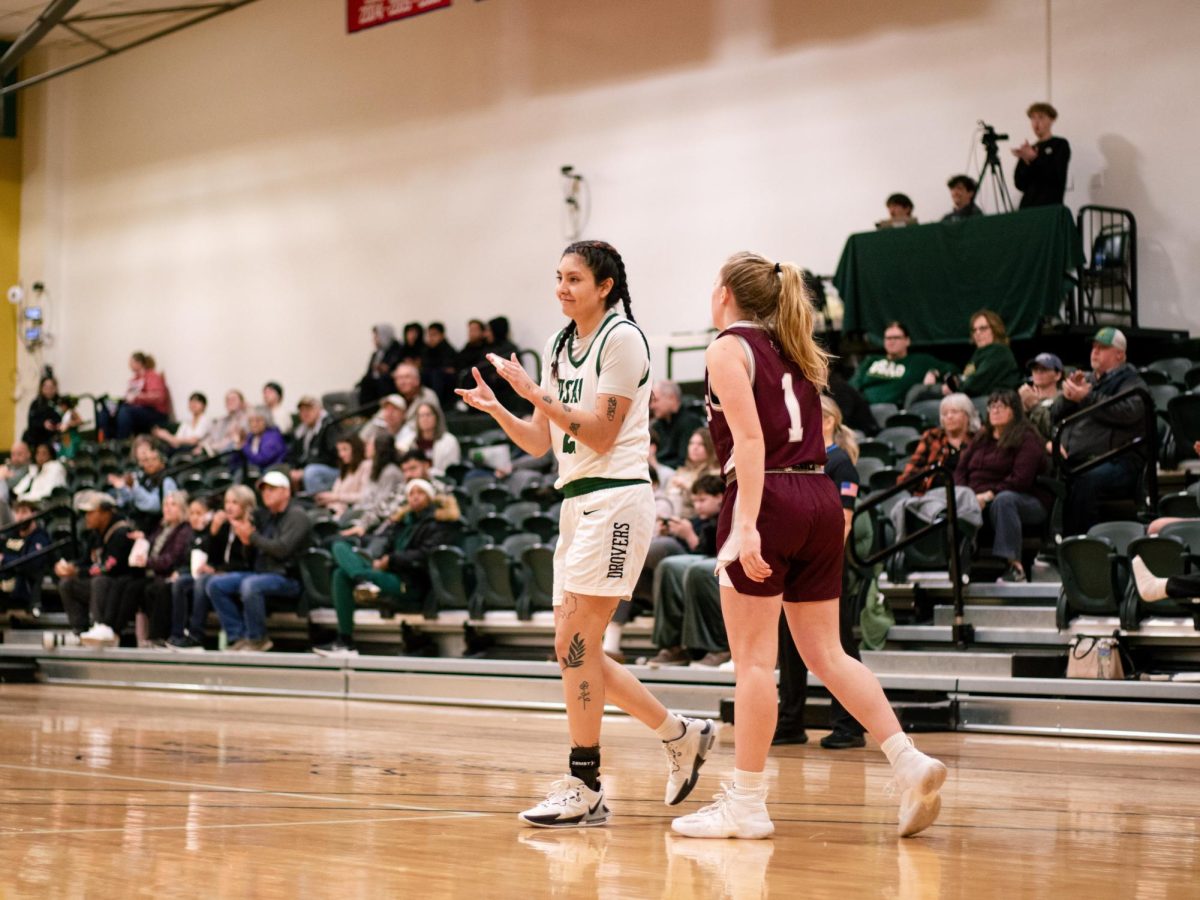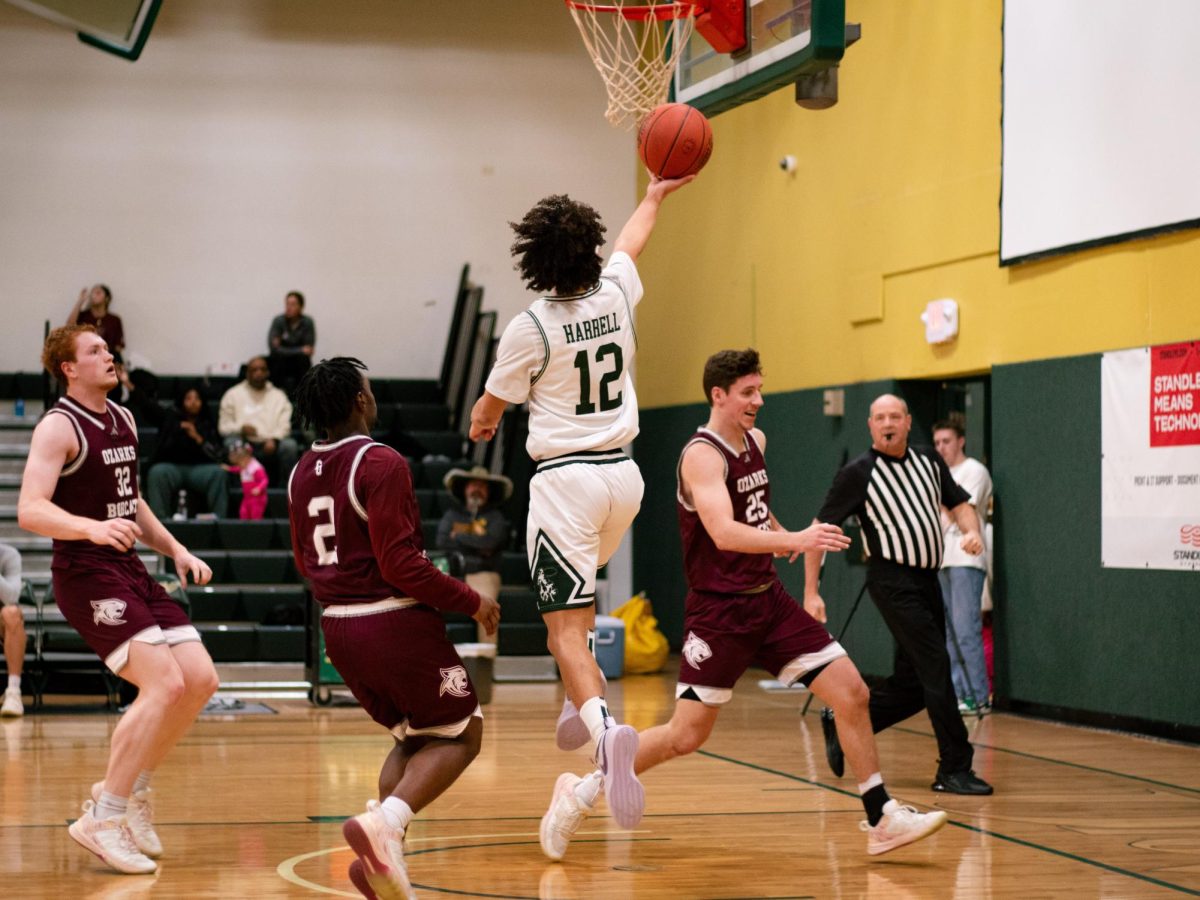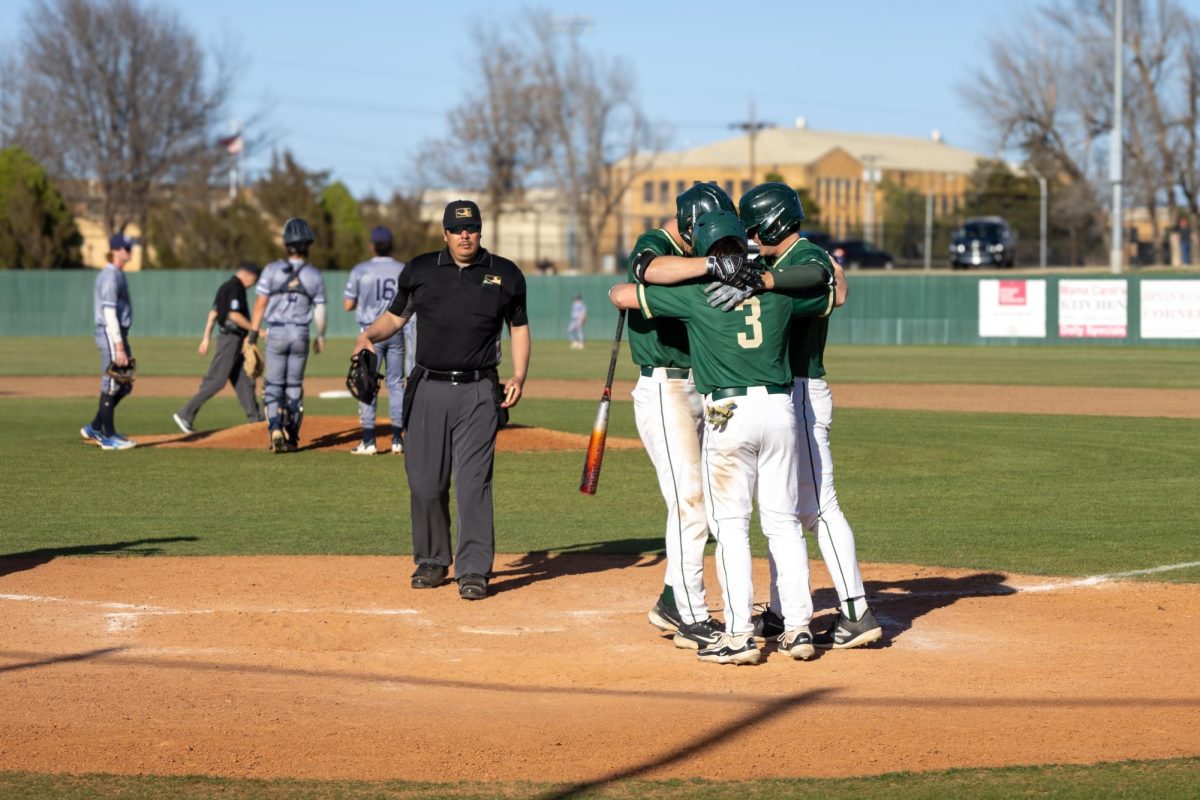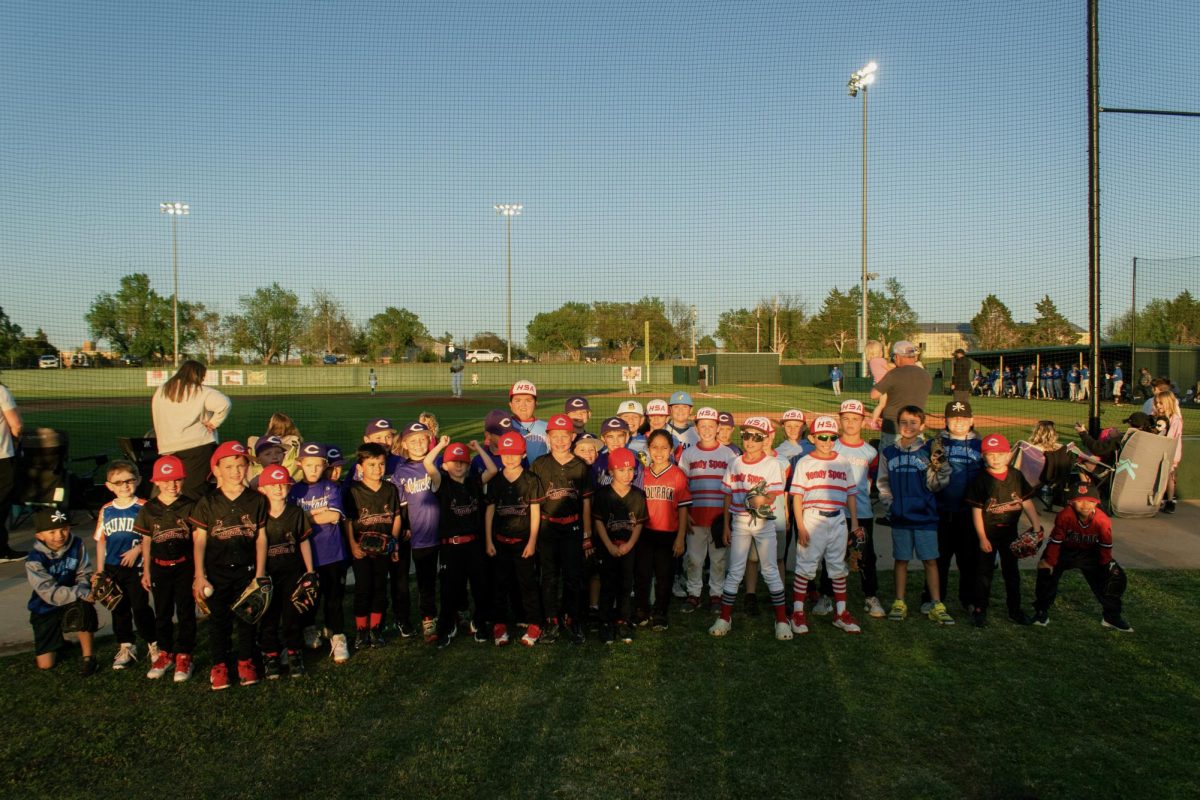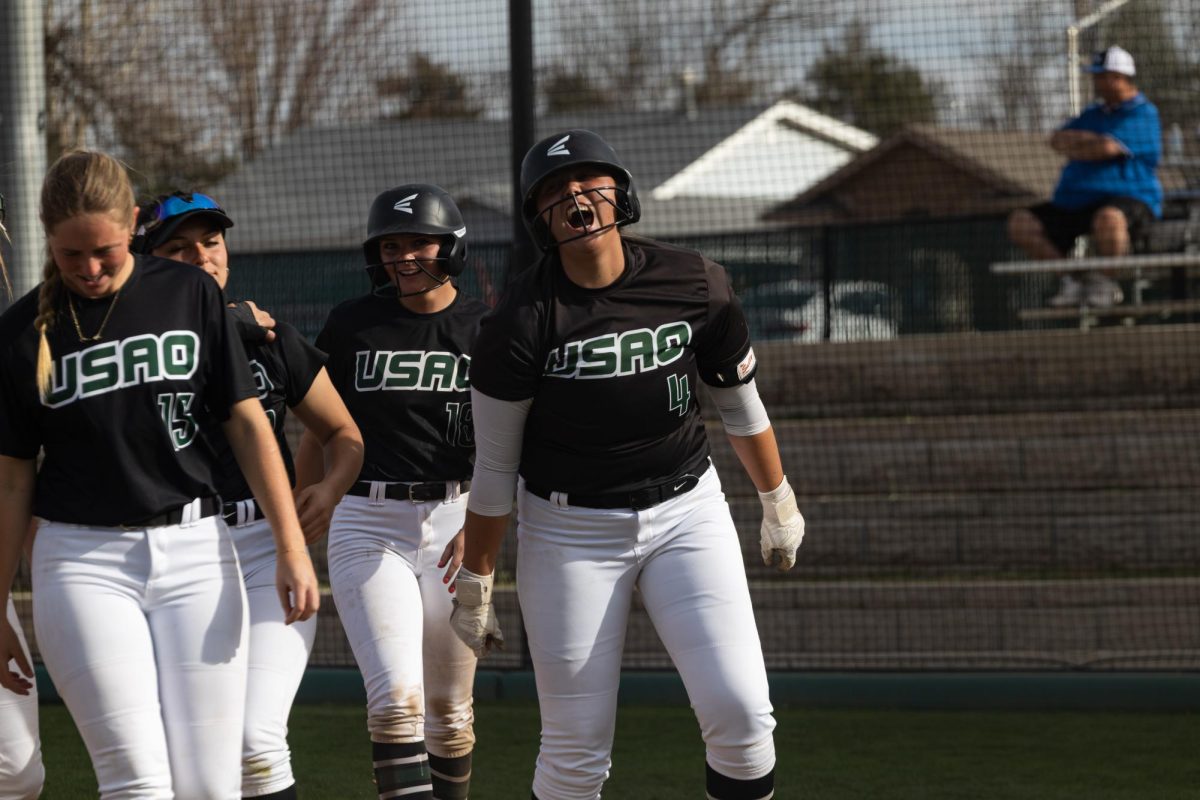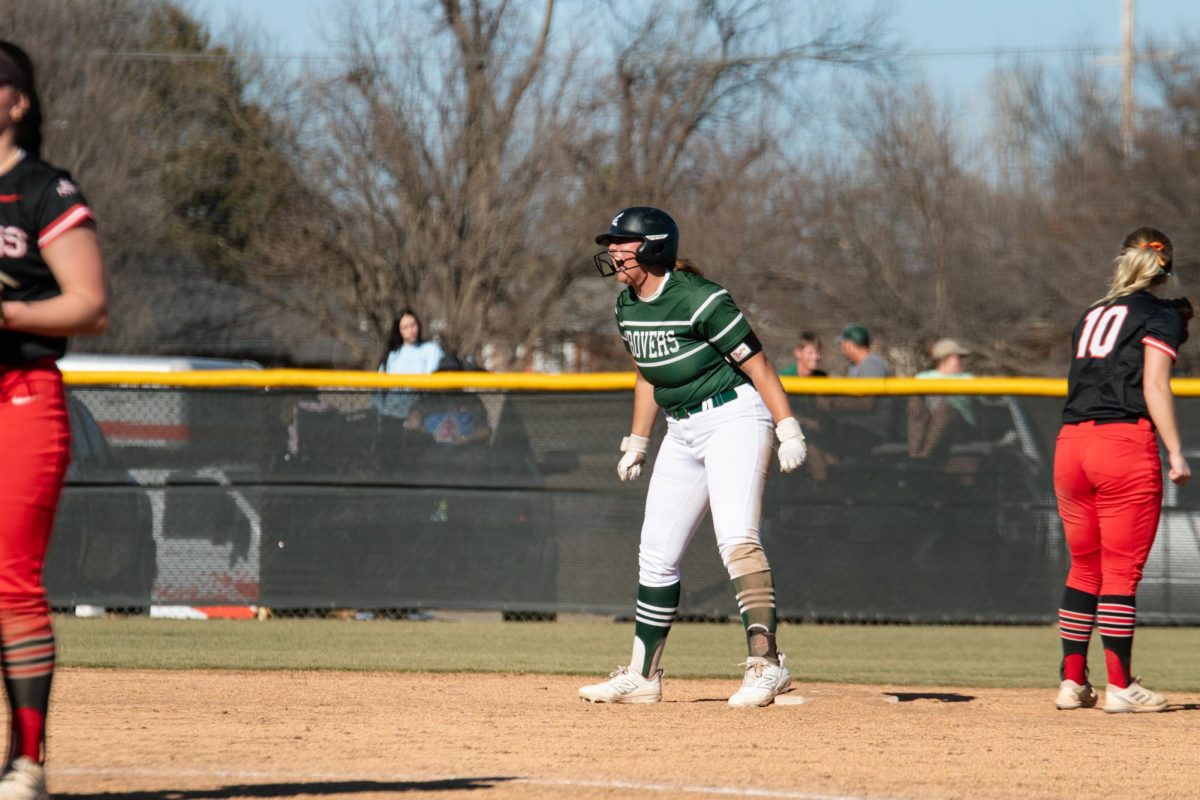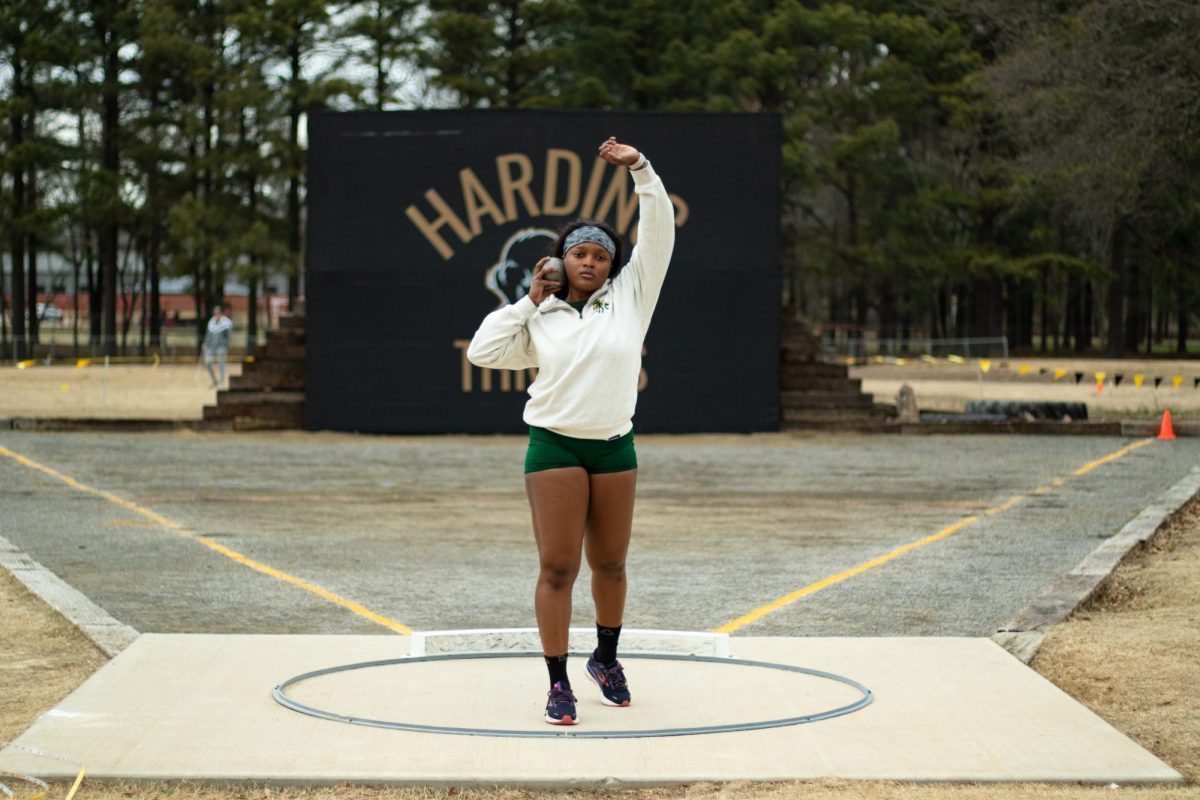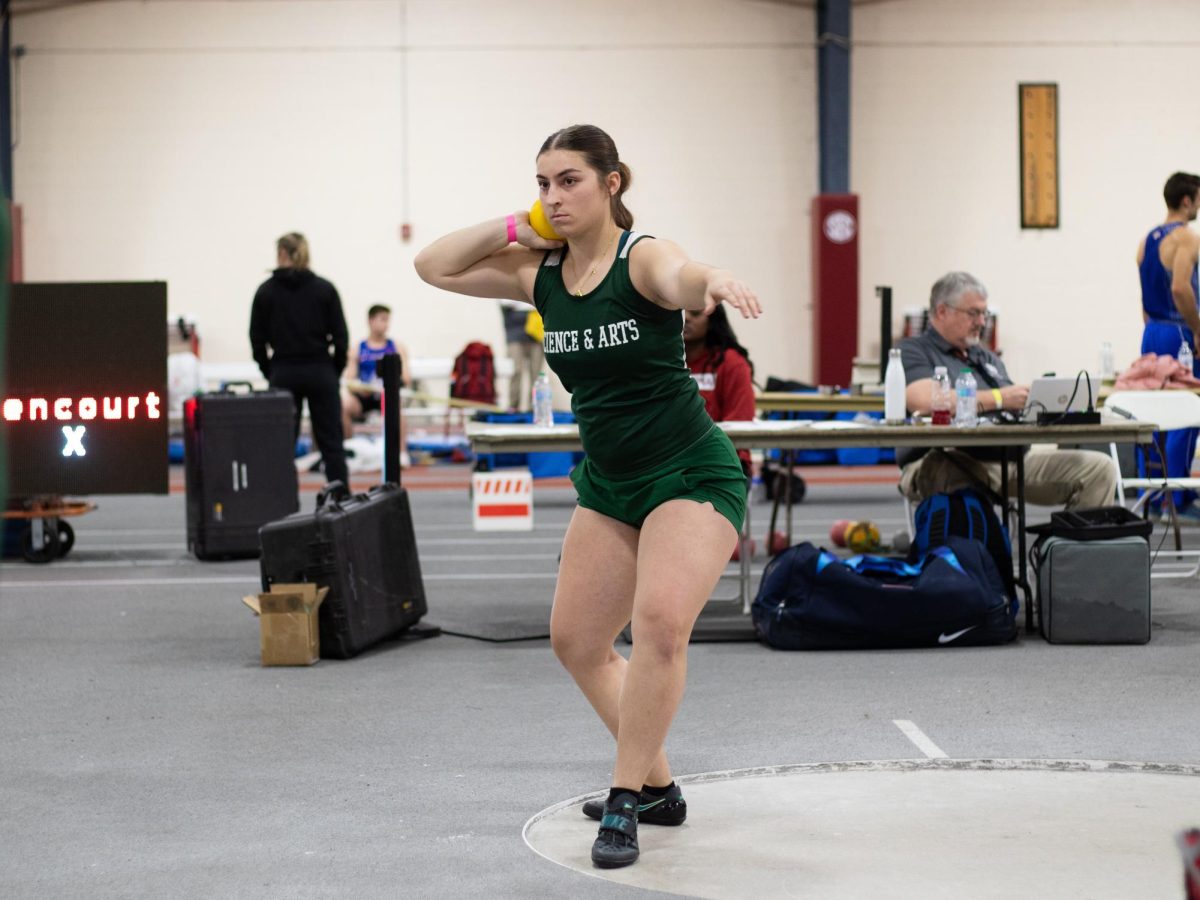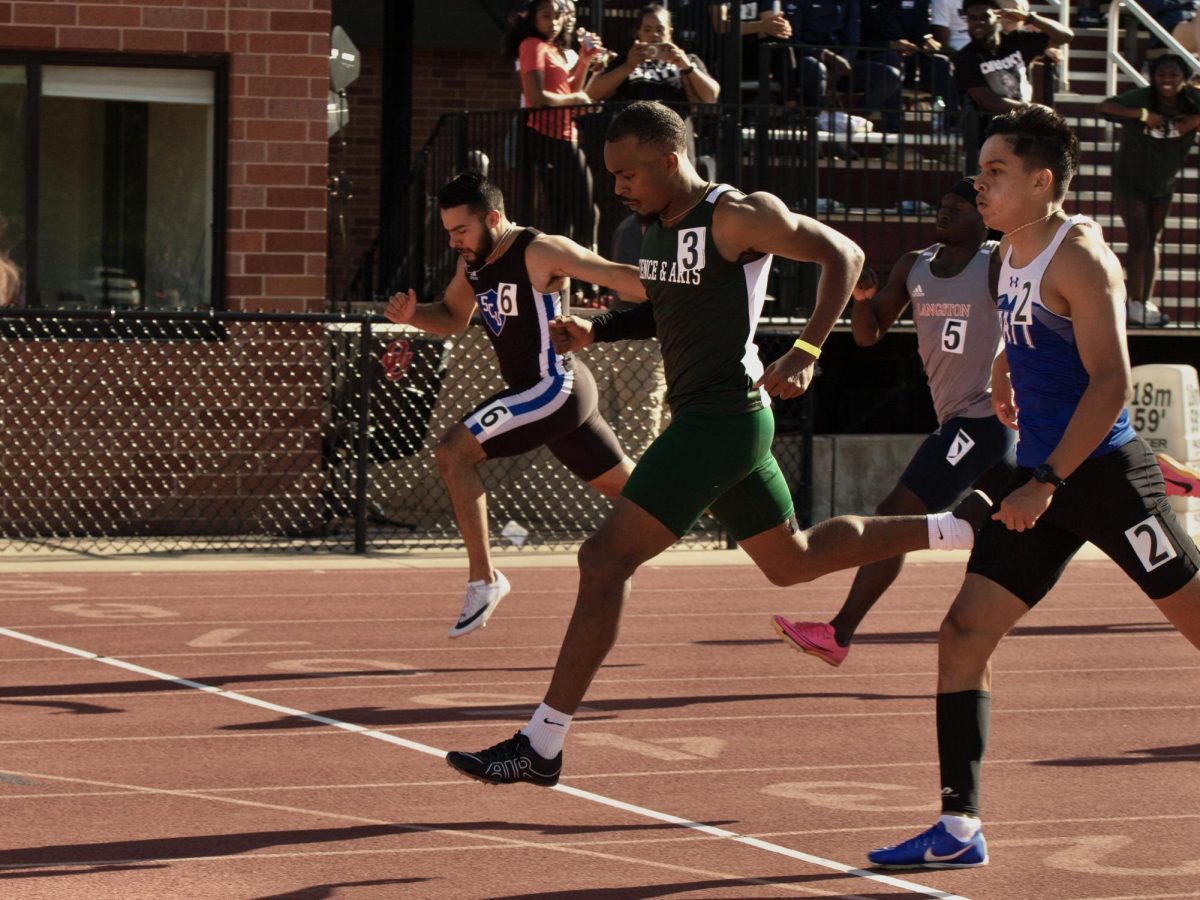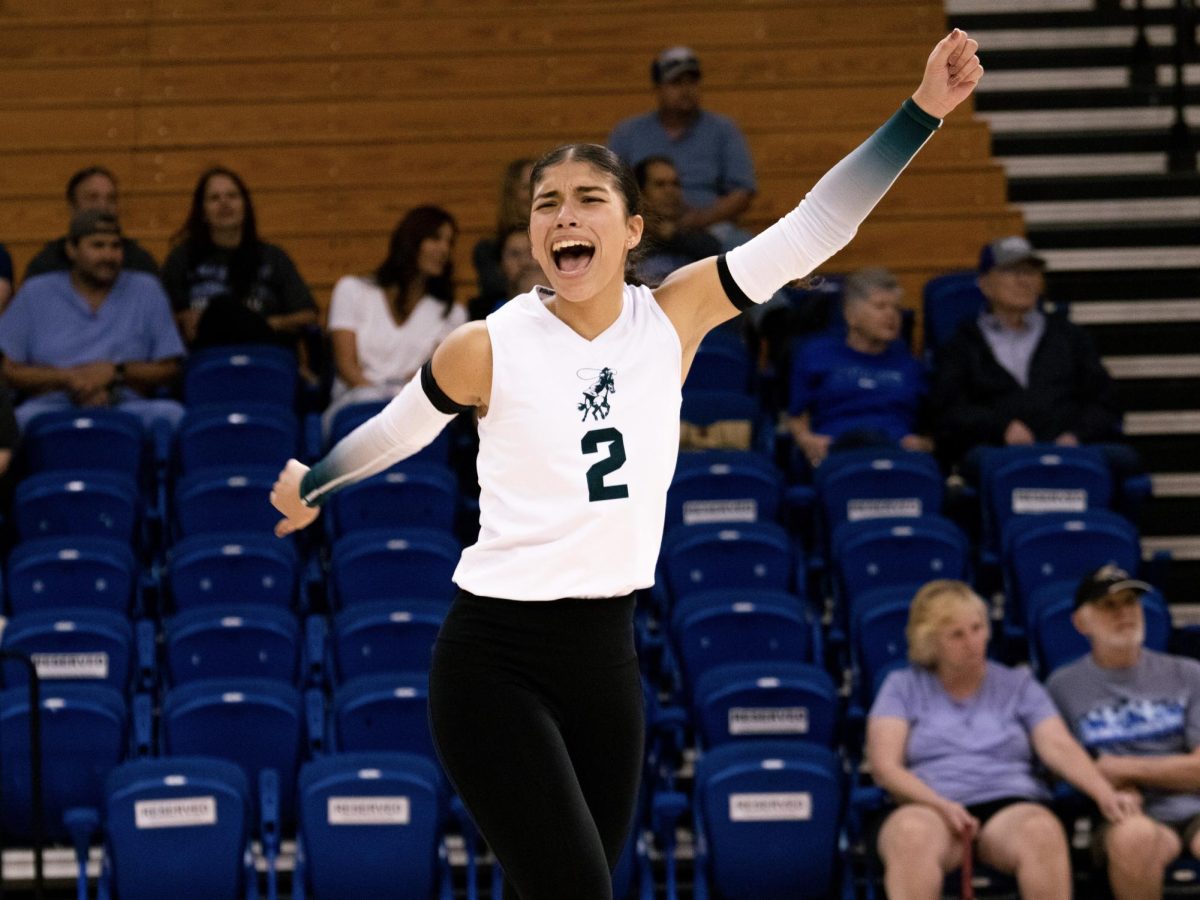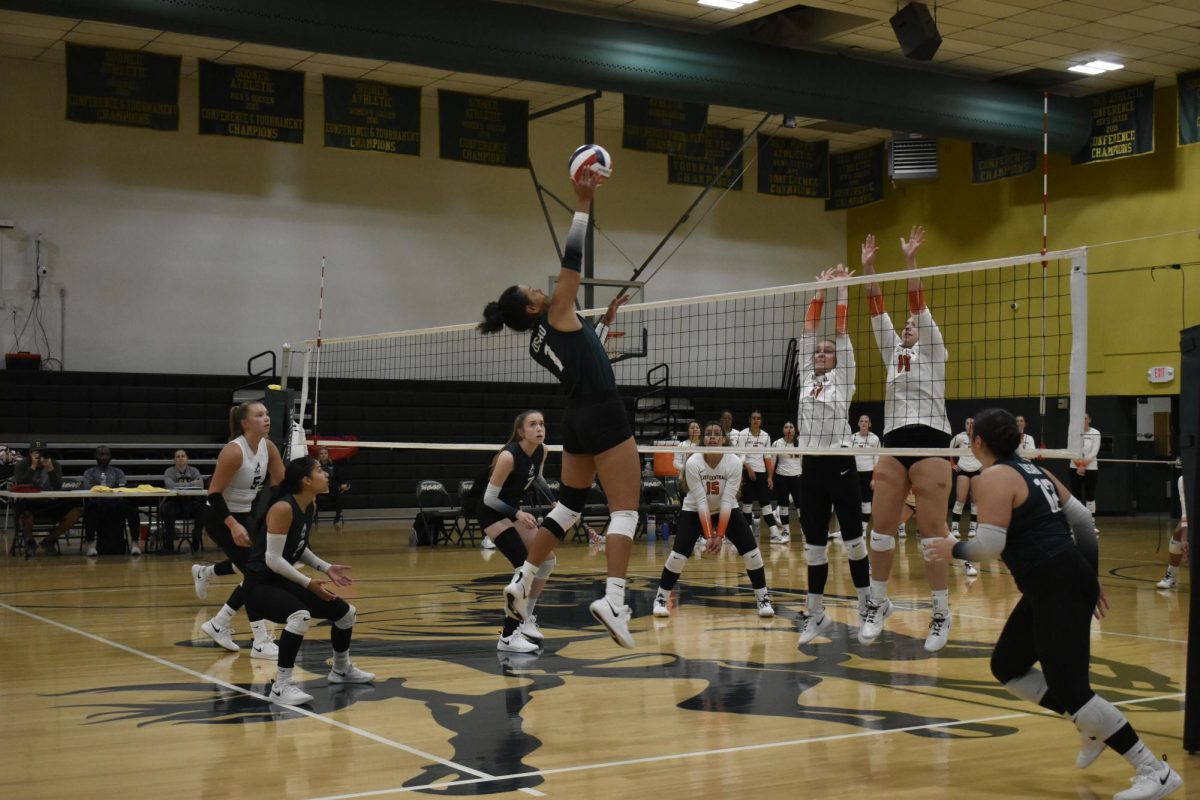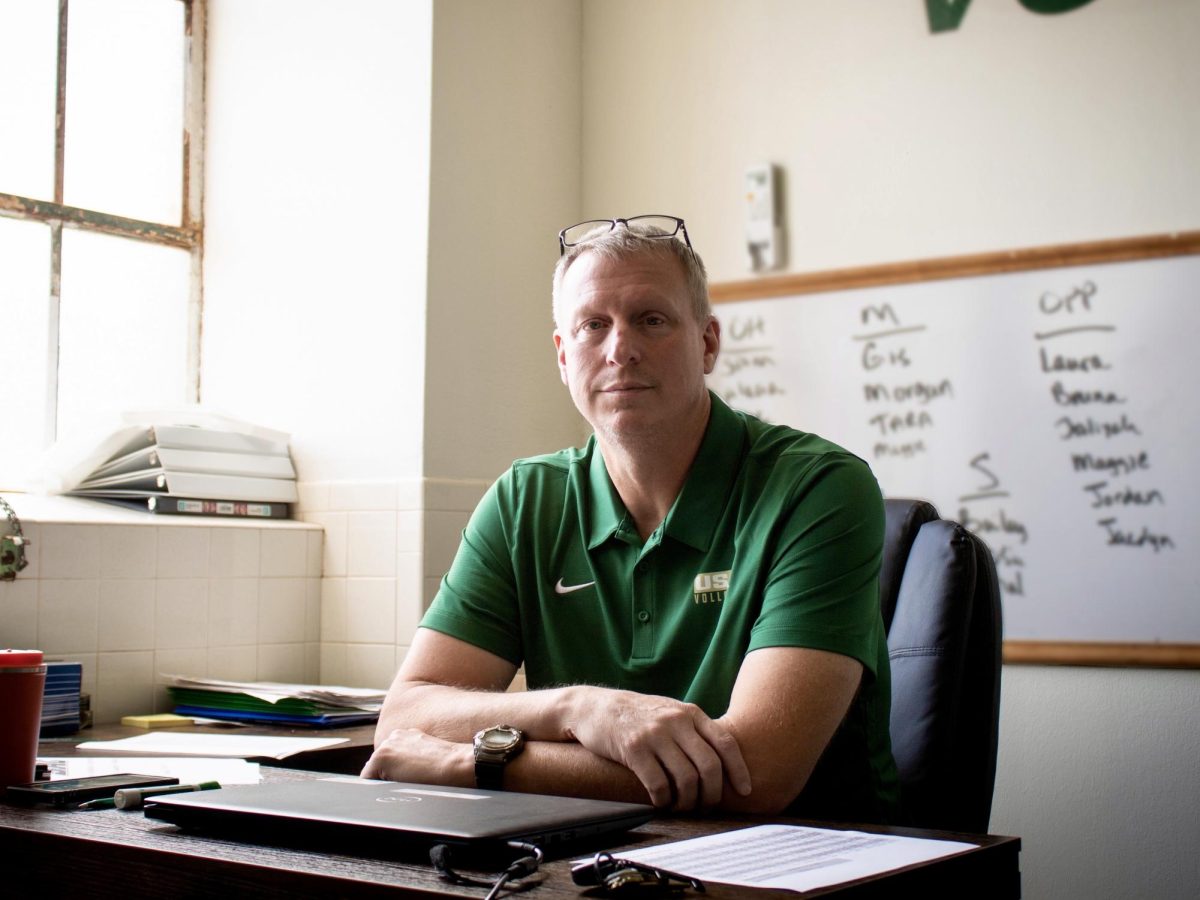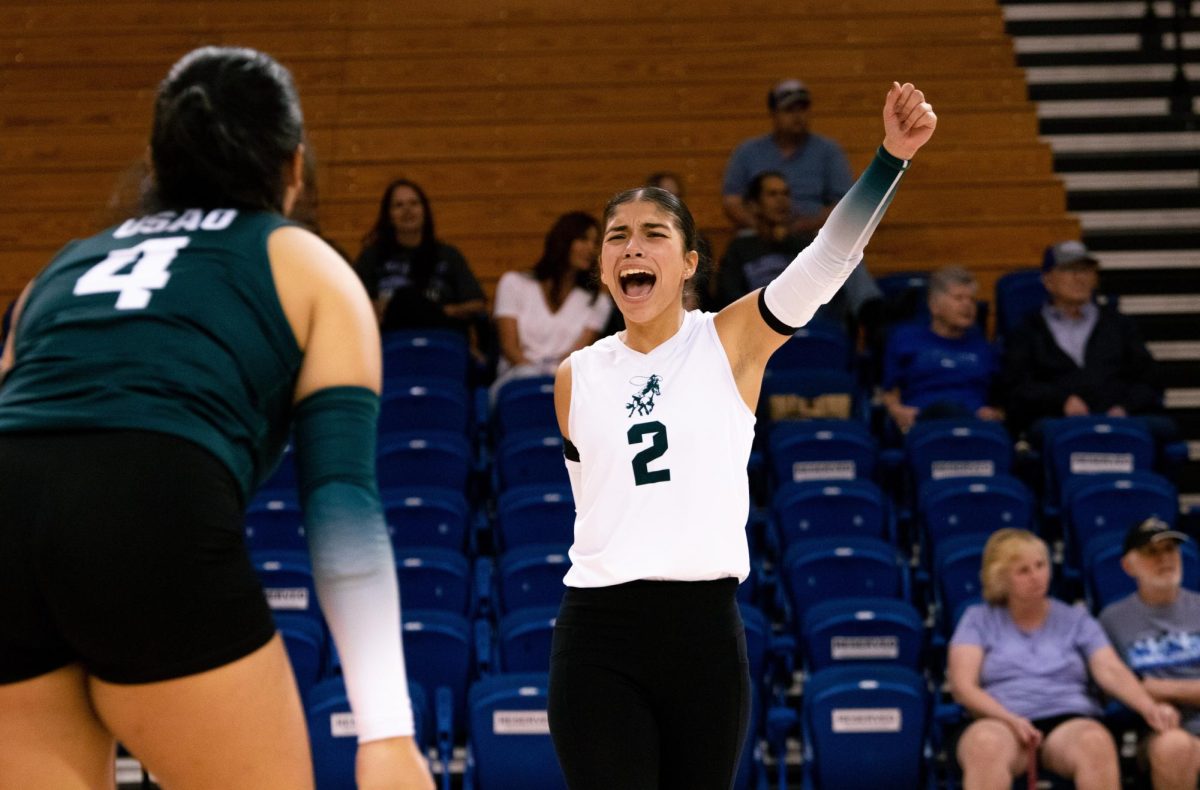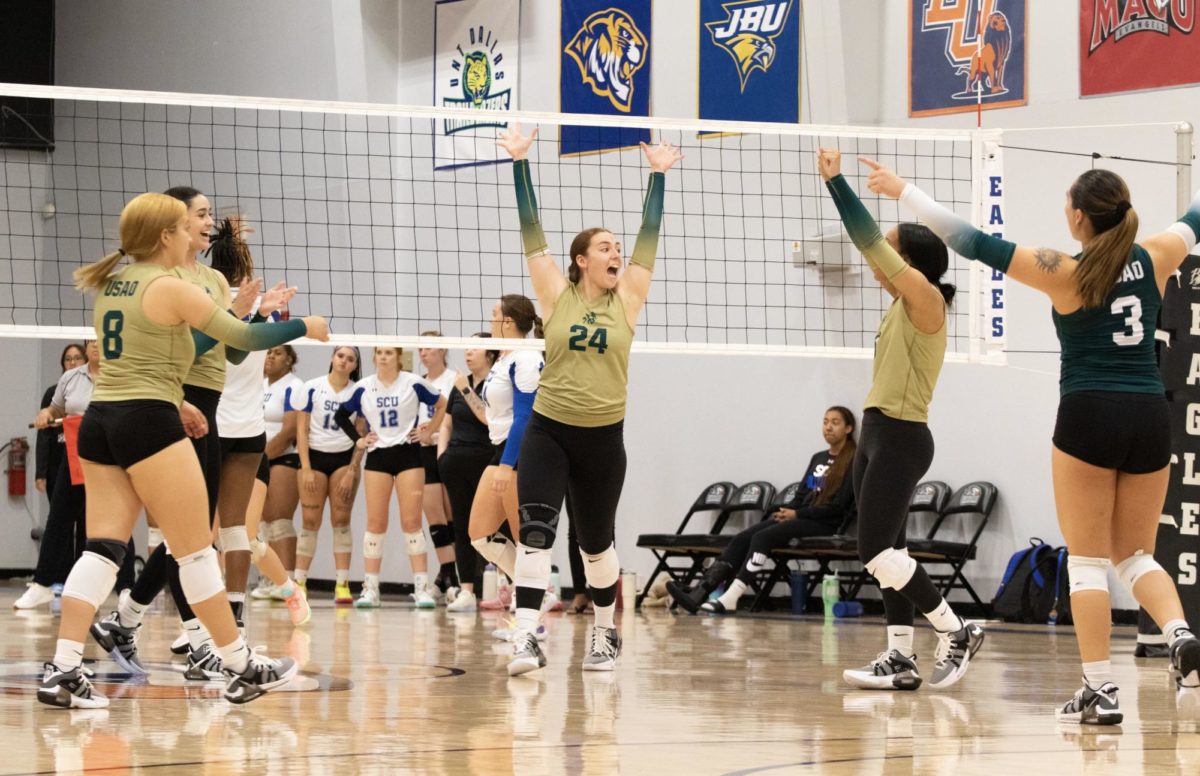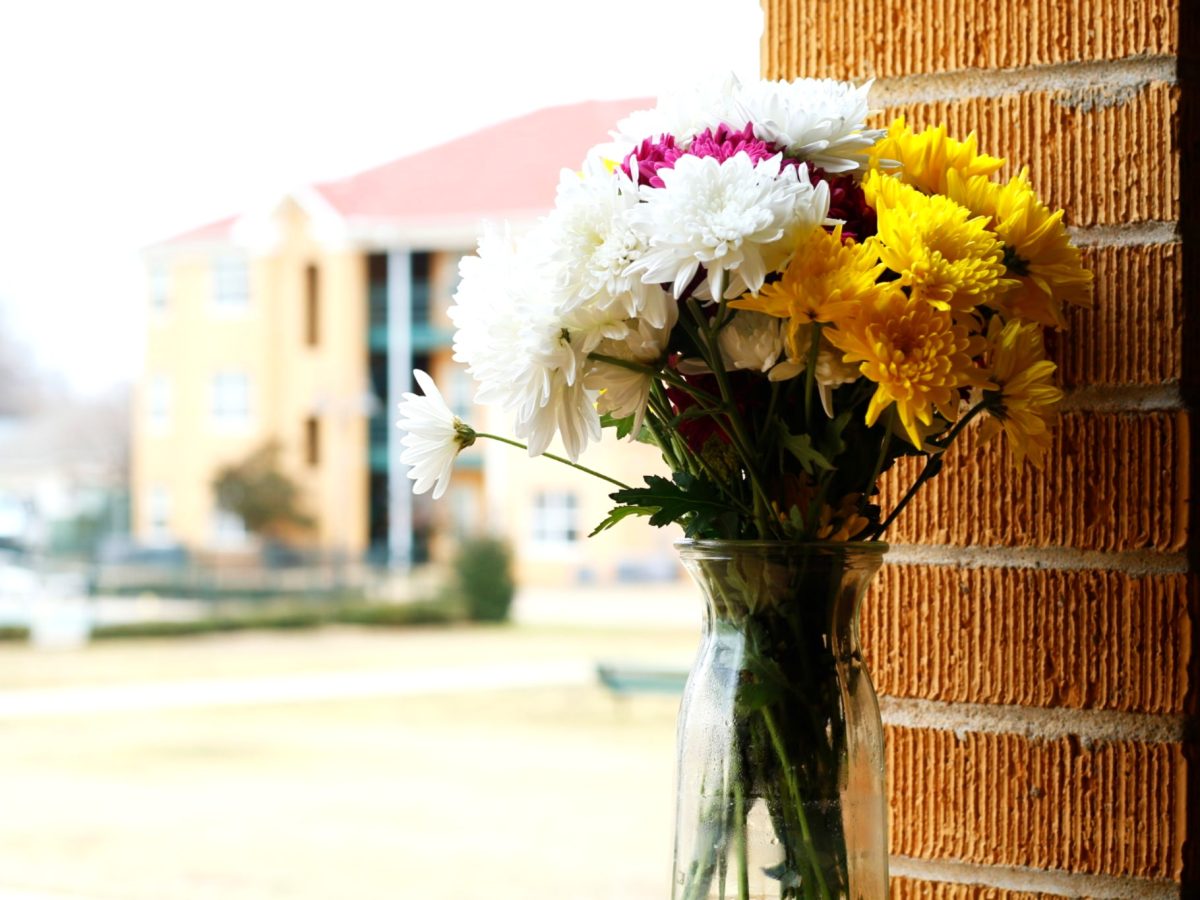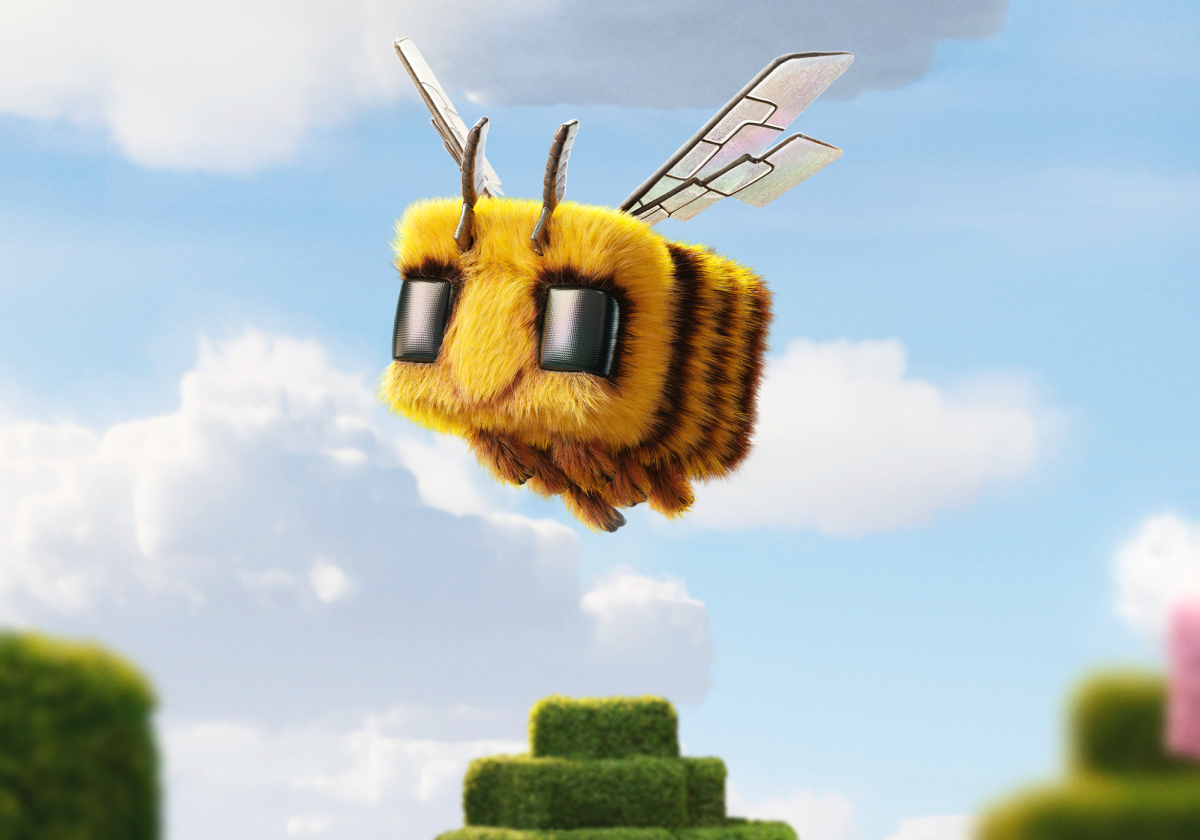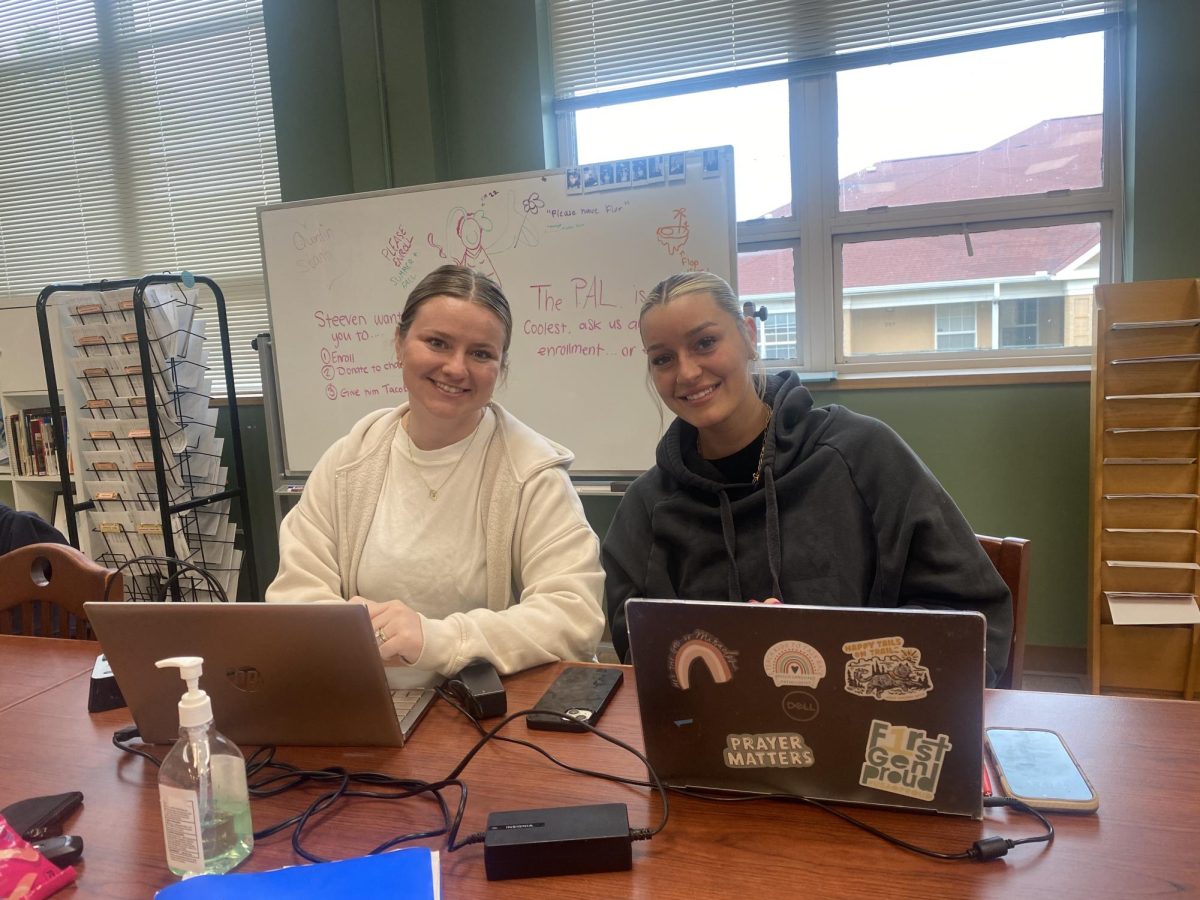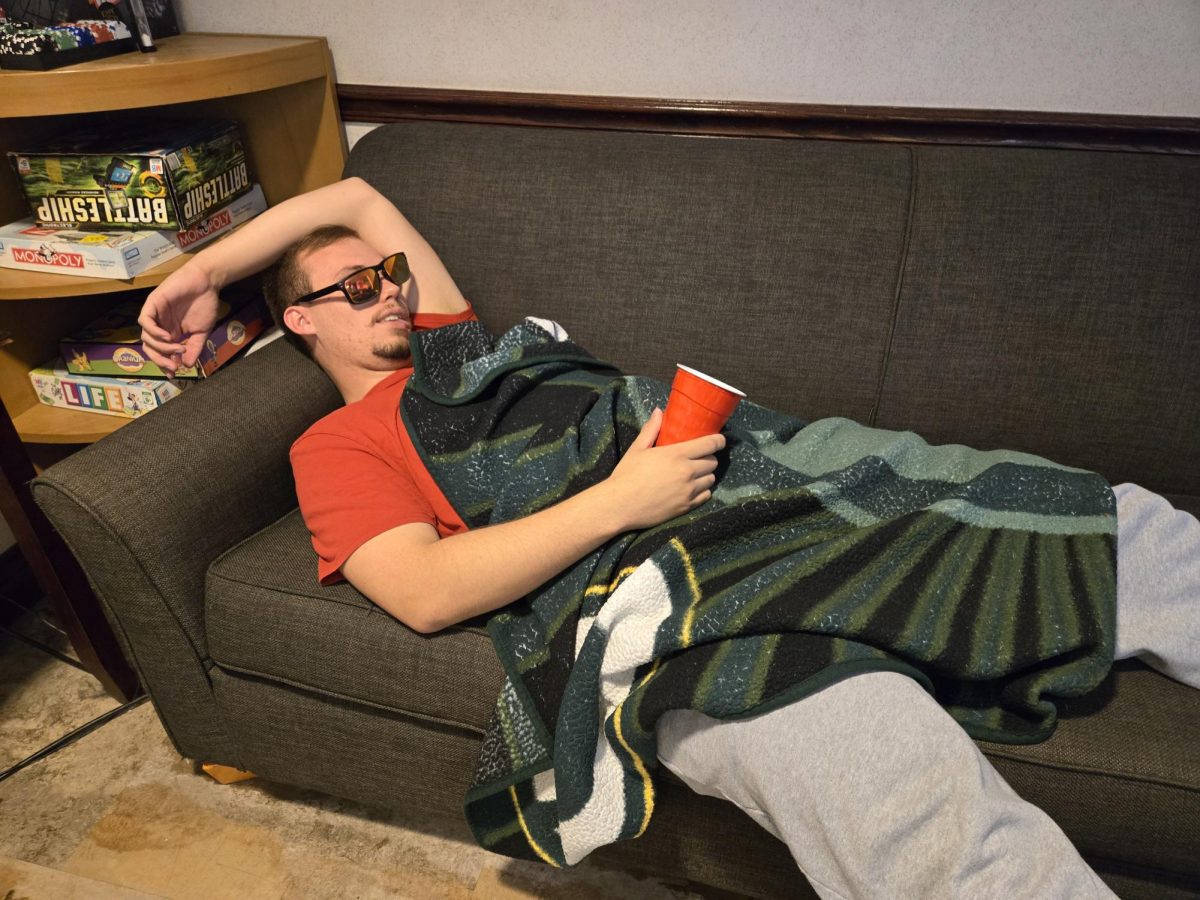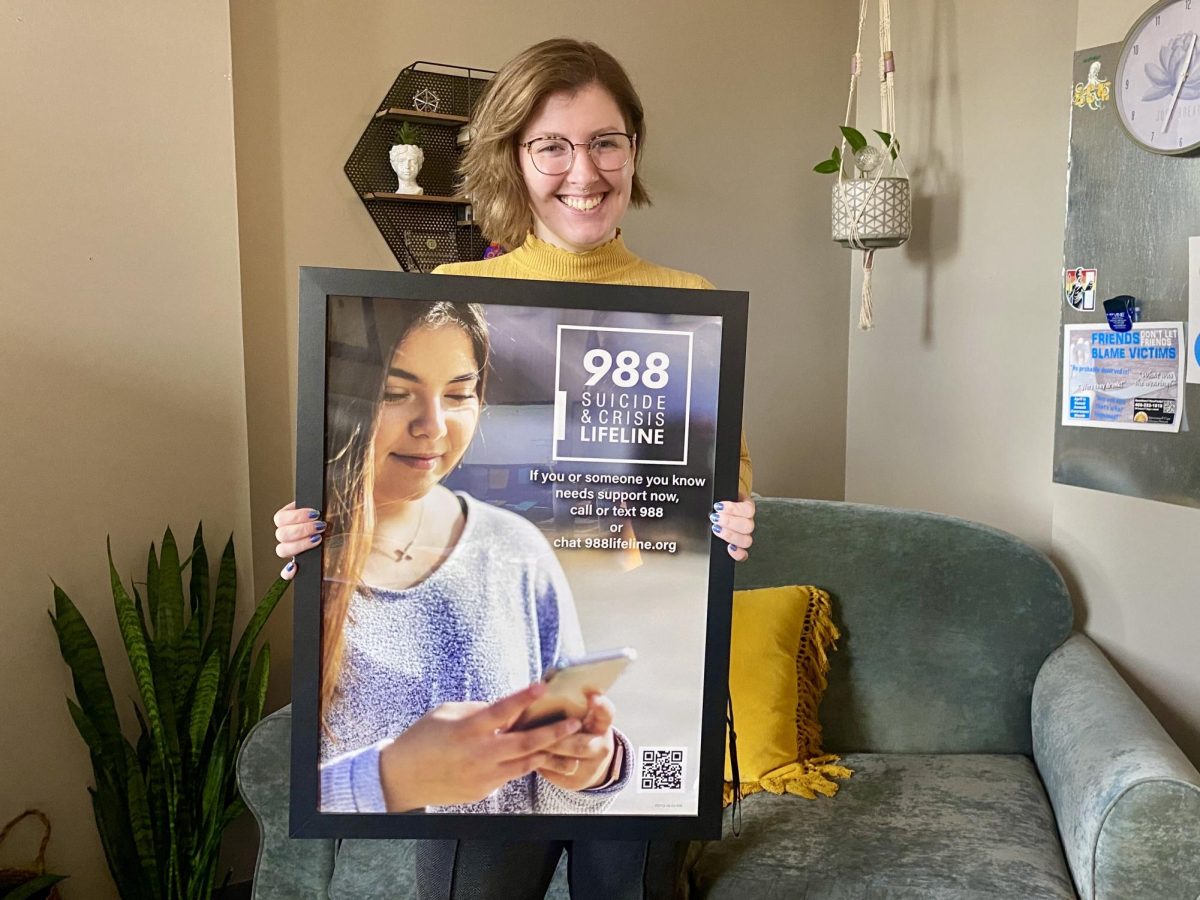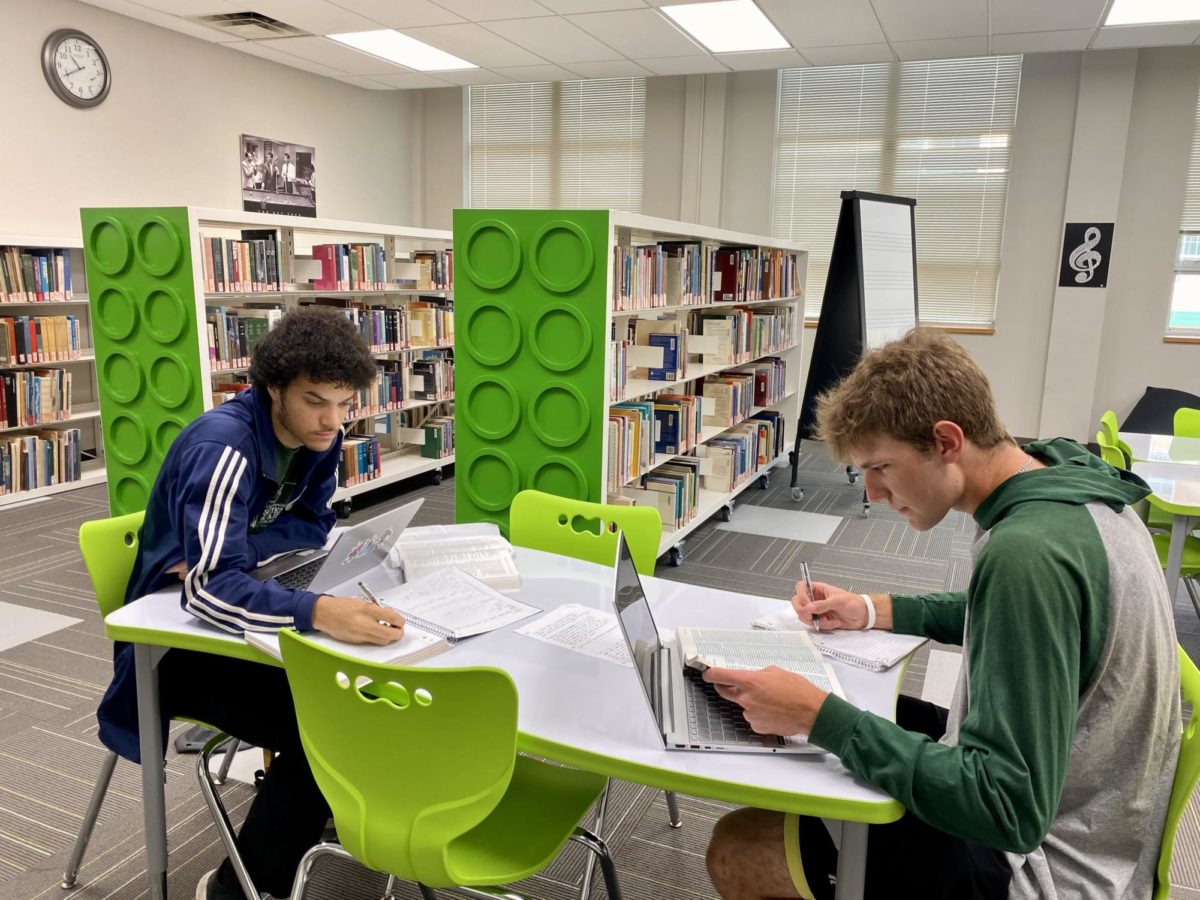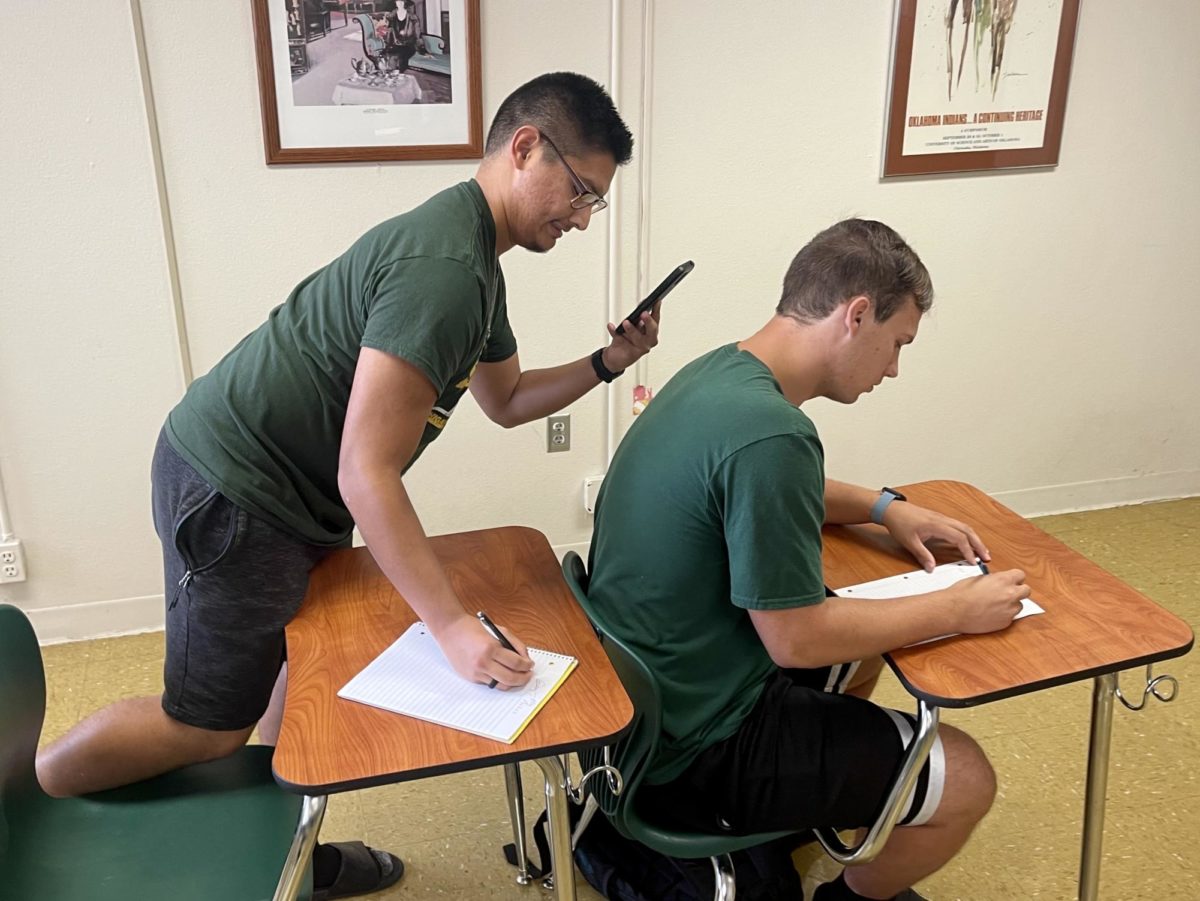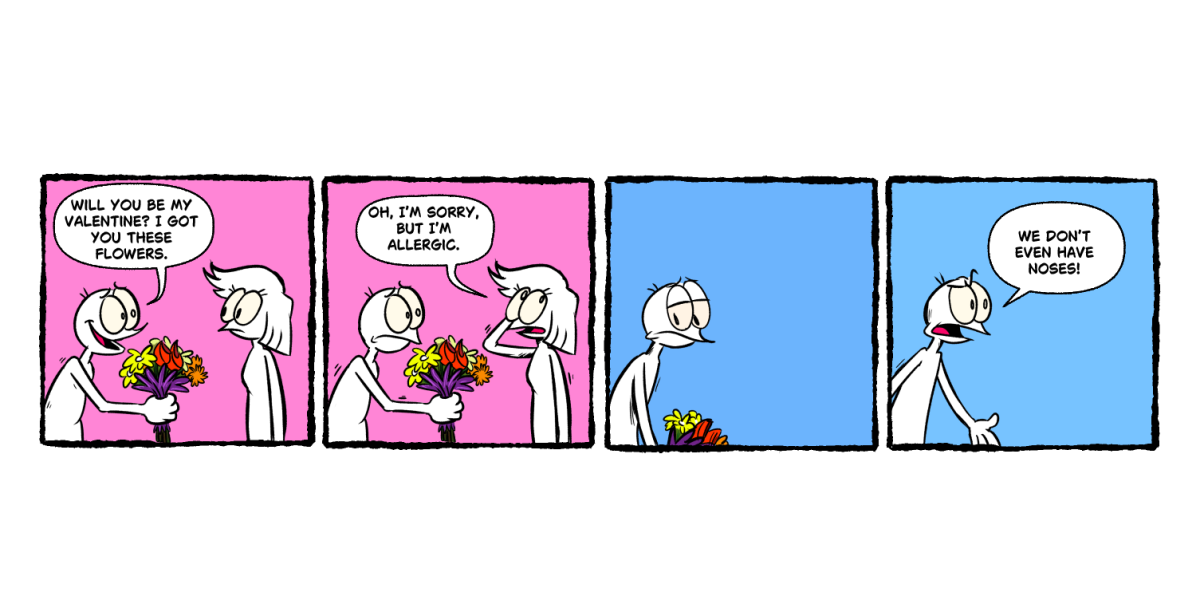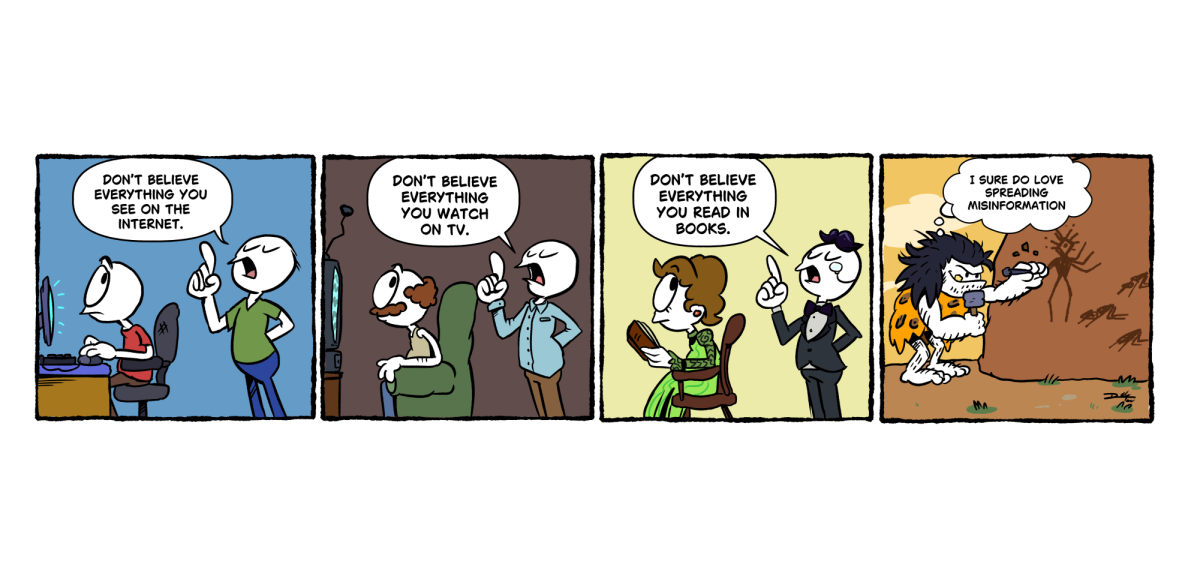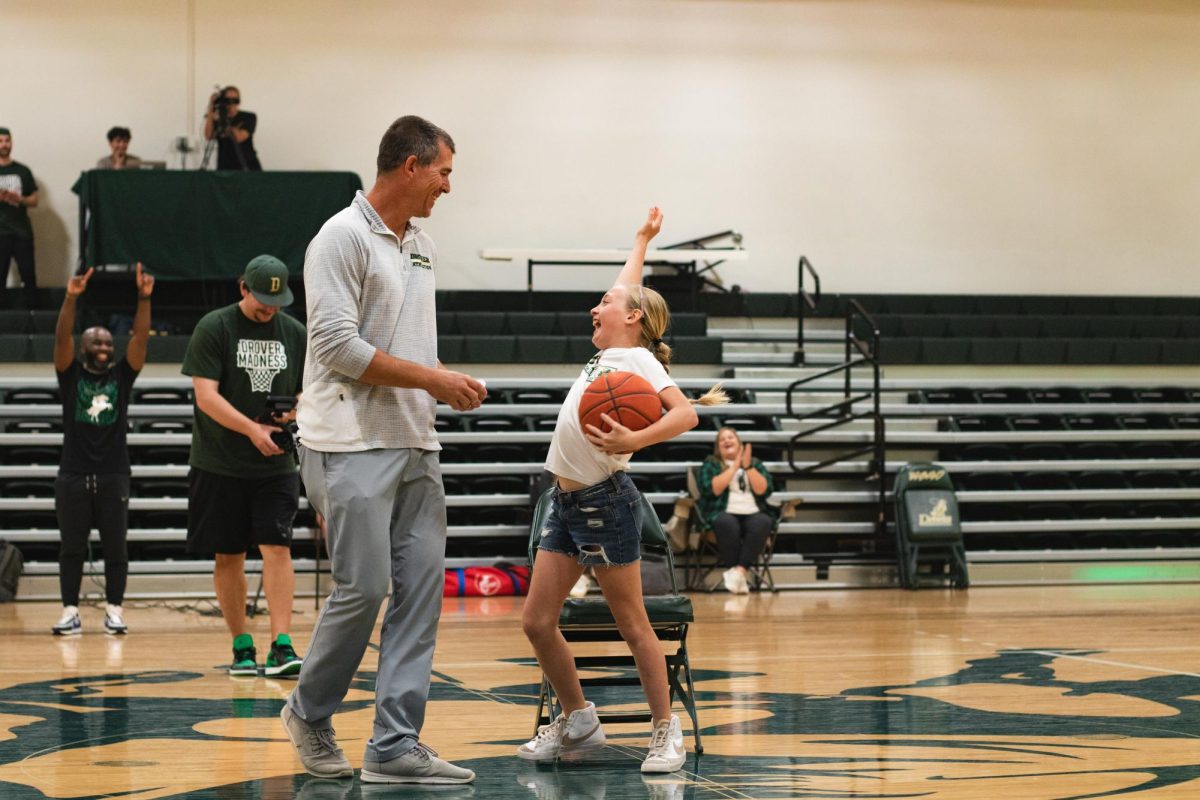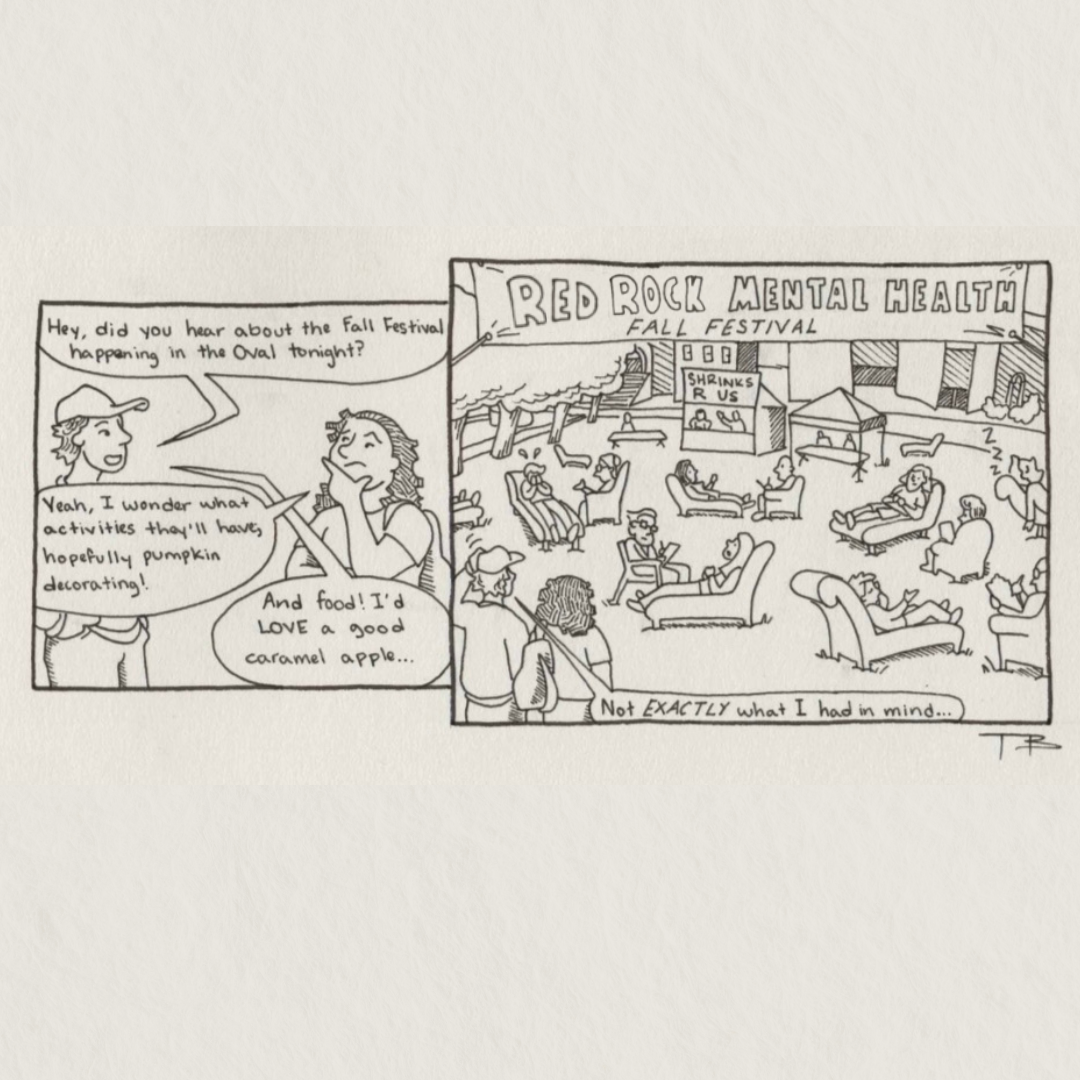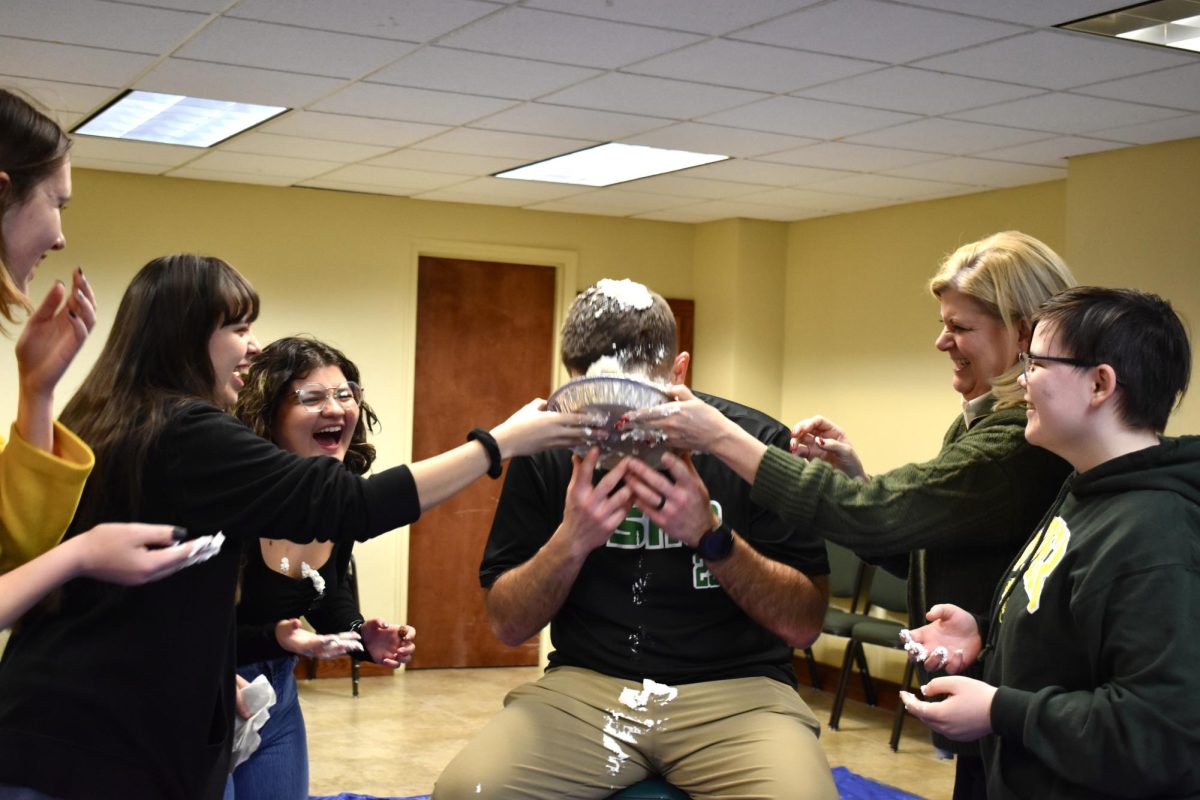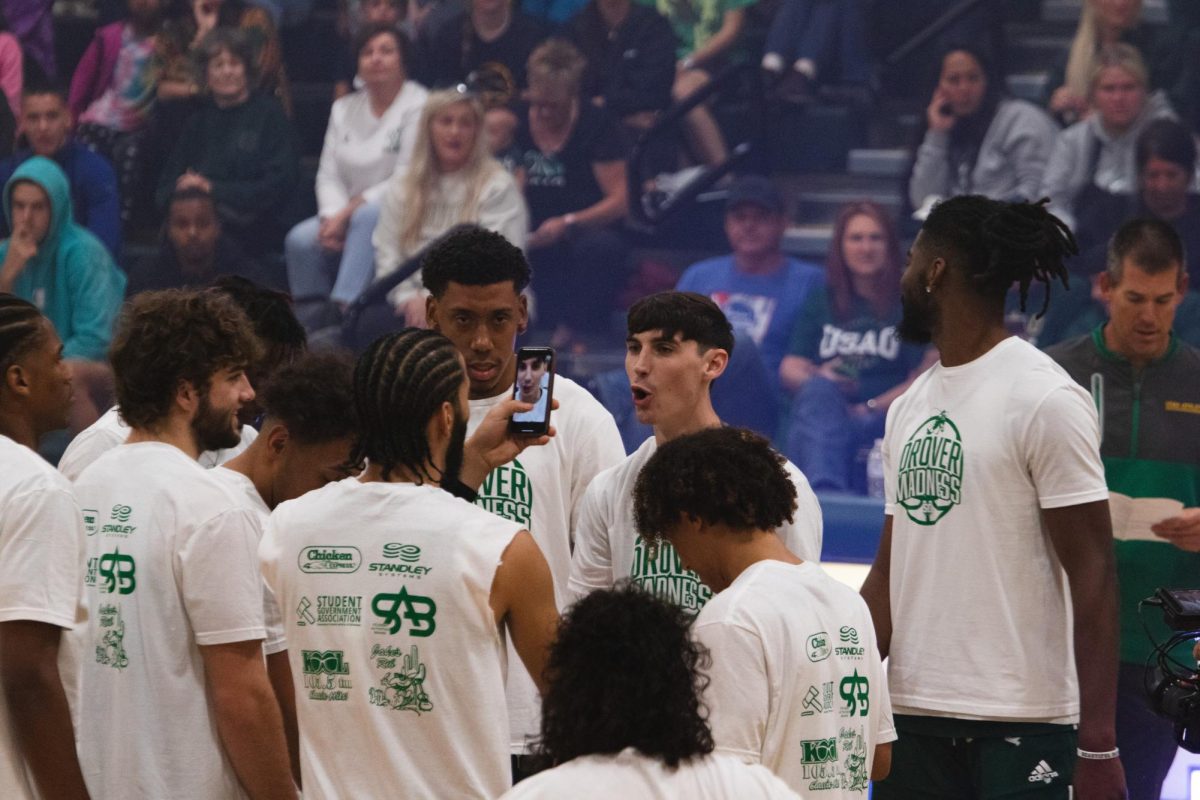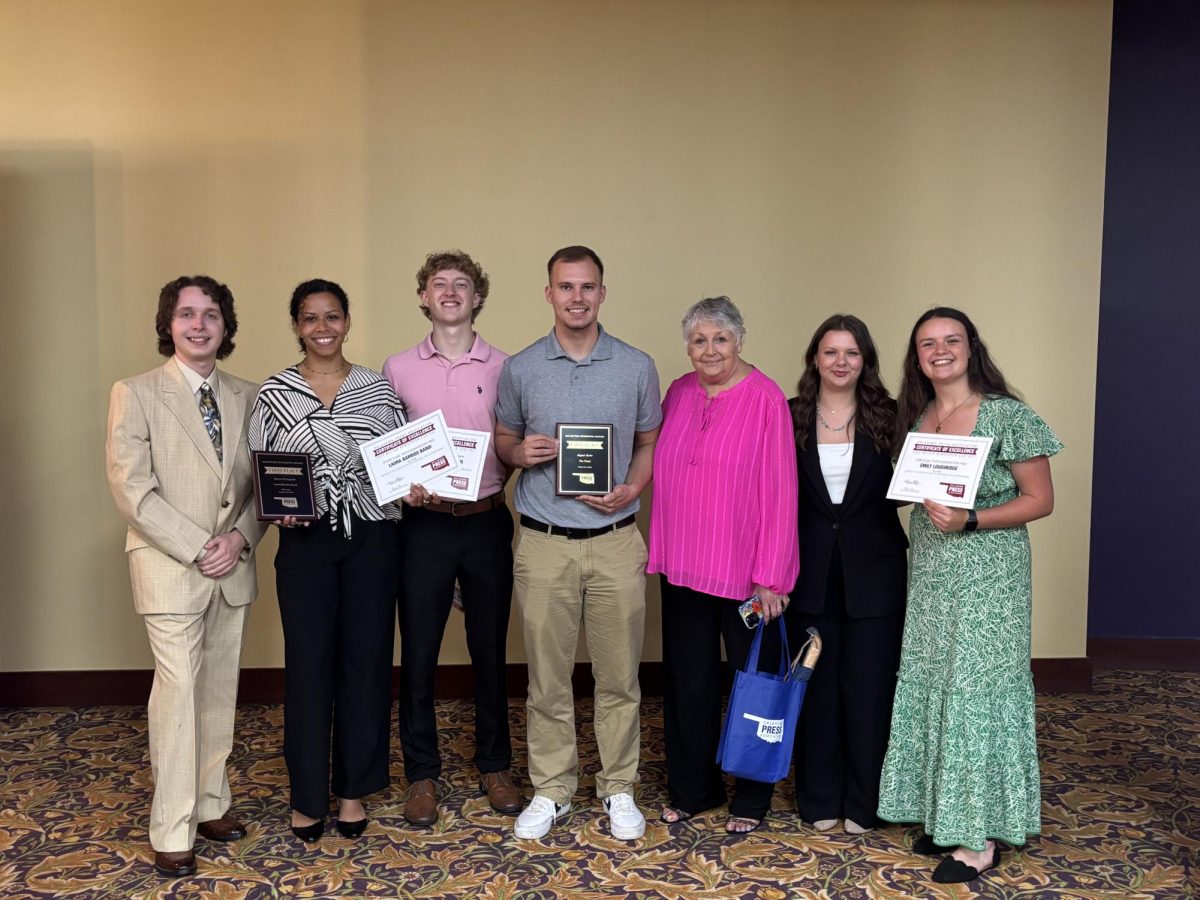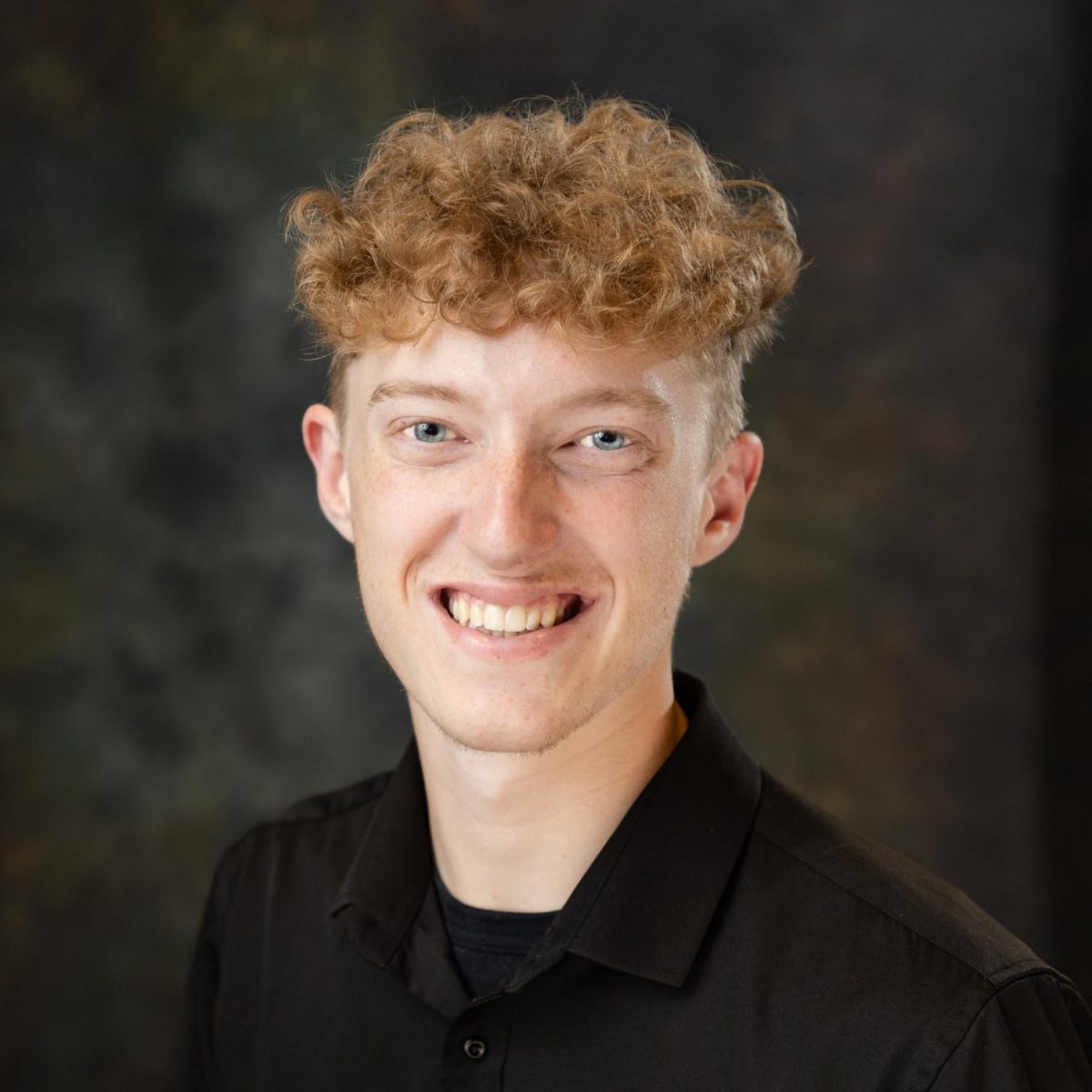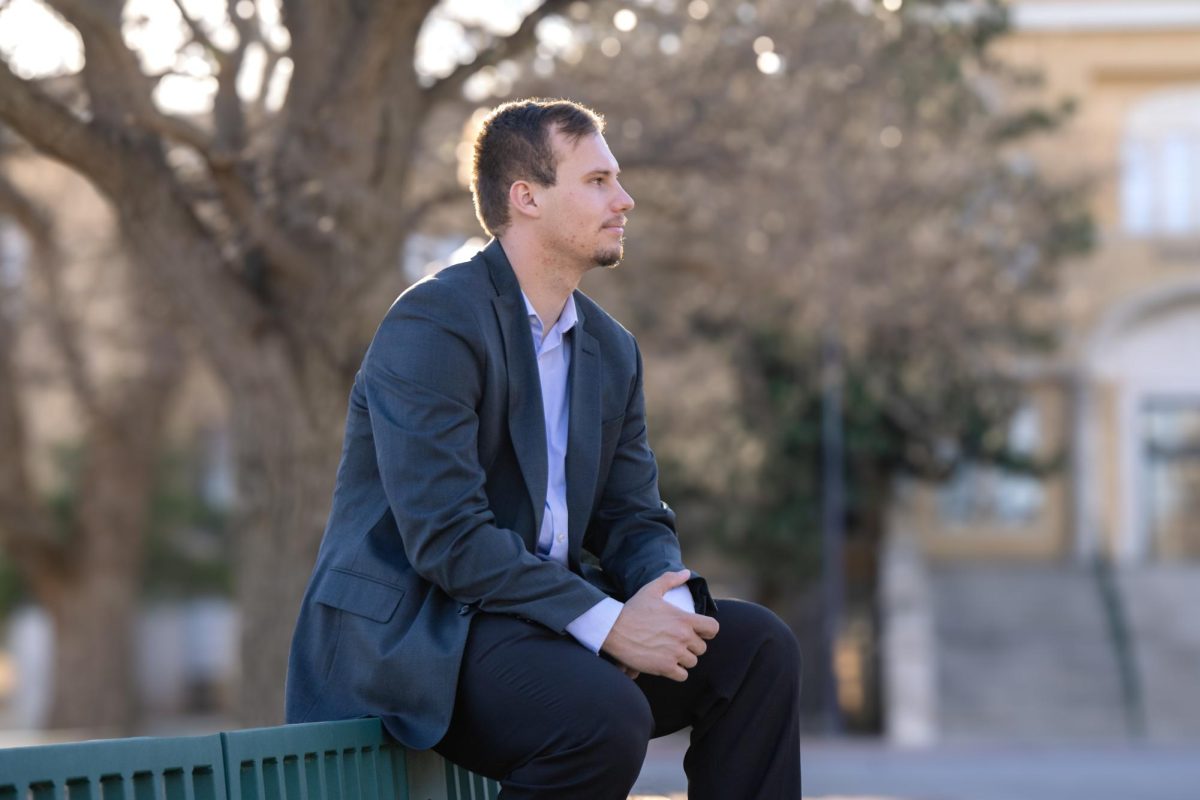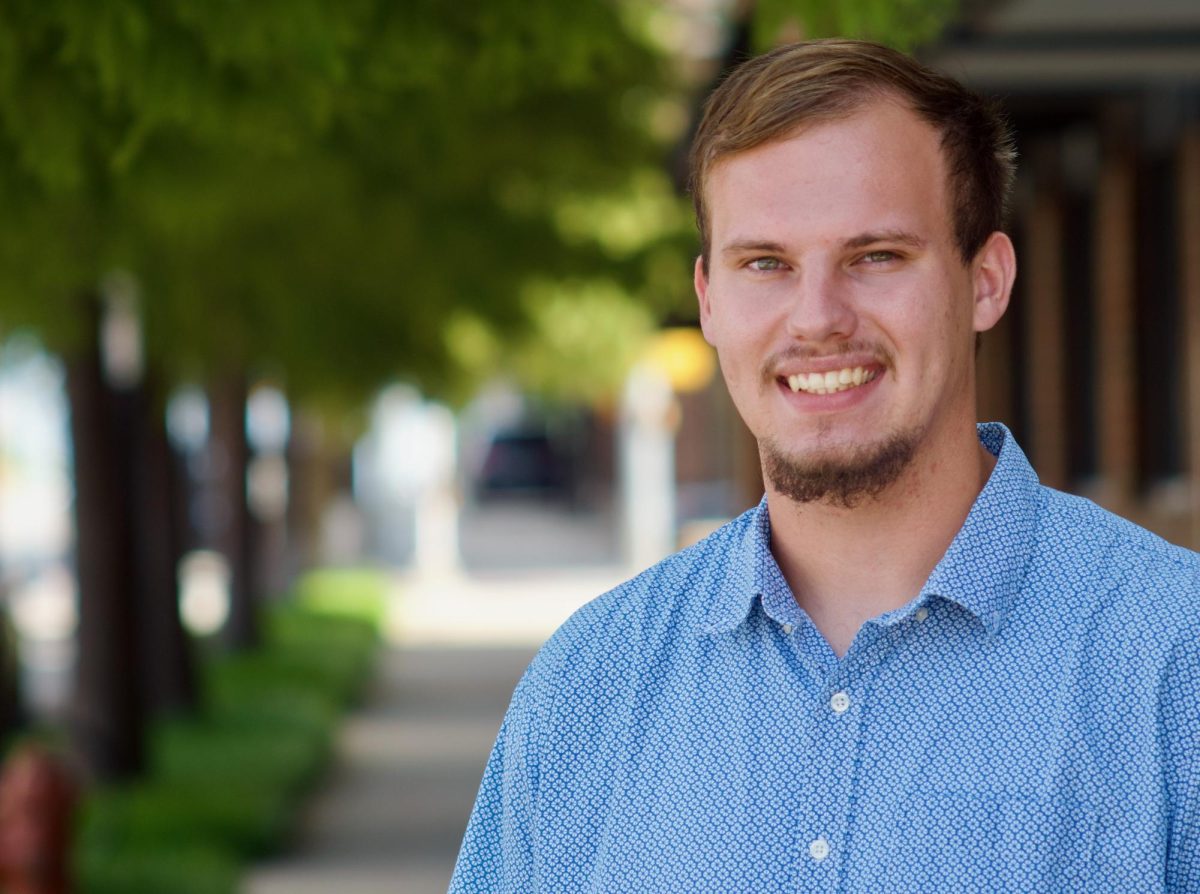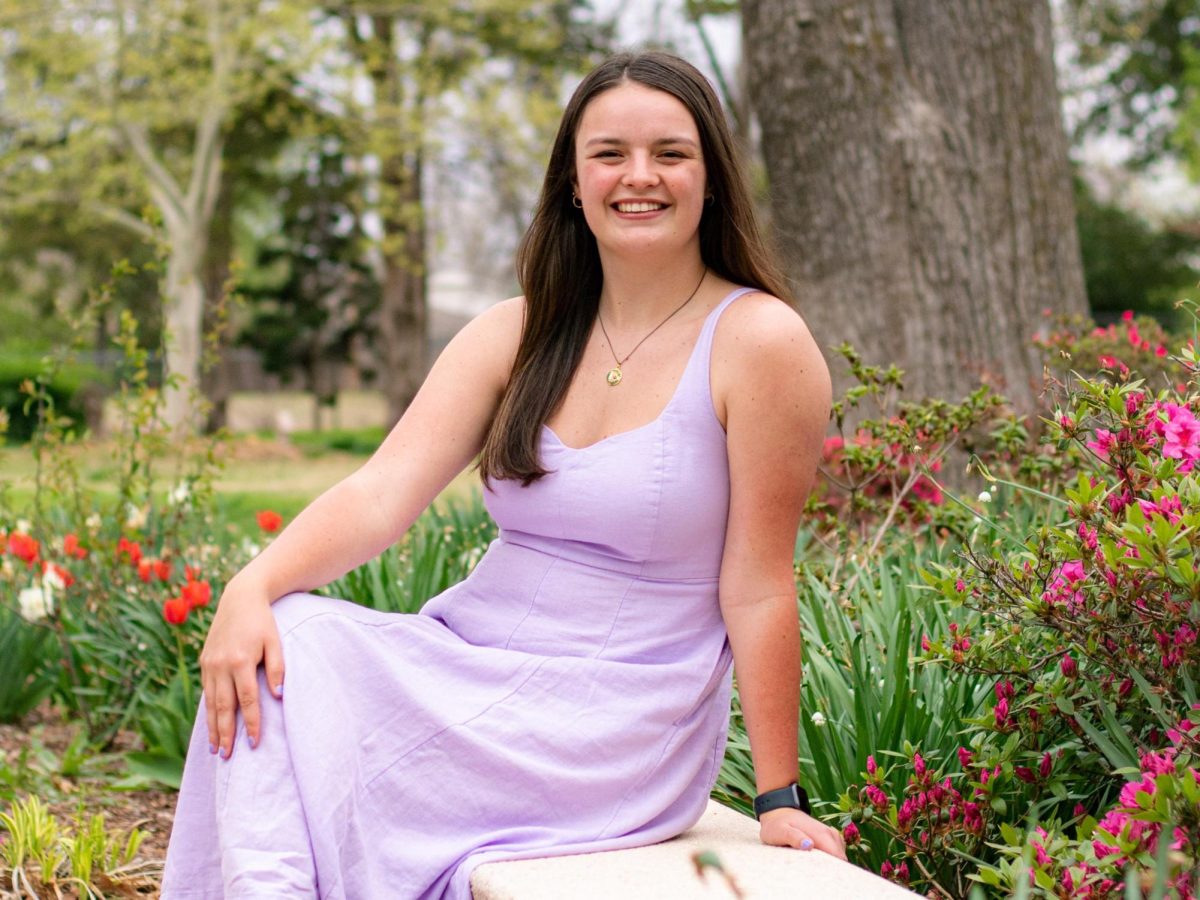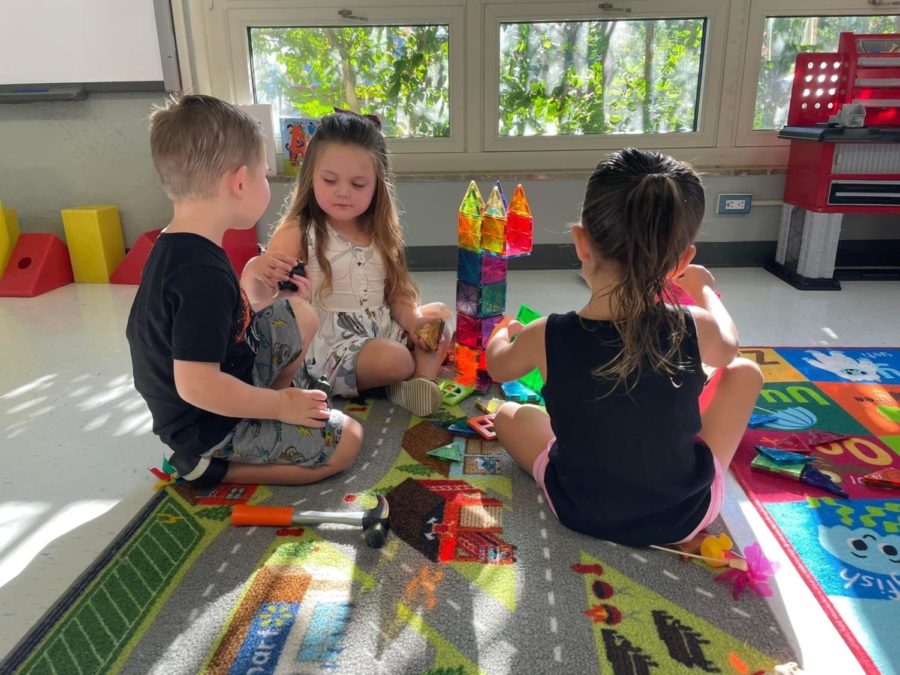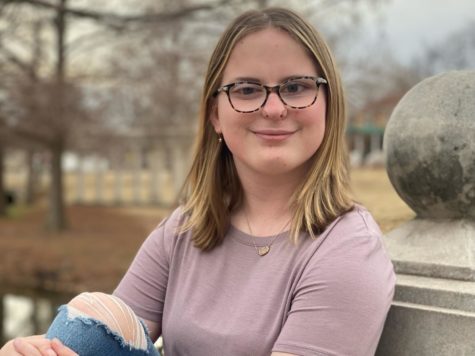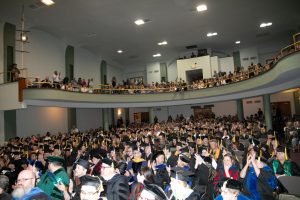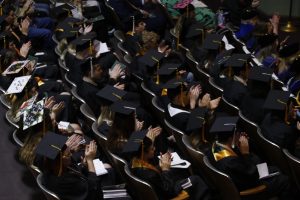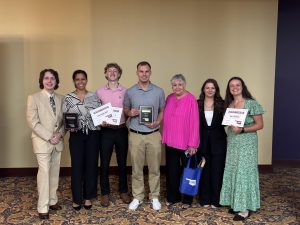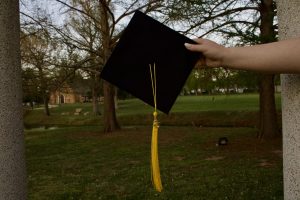Education for USAO’s Smalls and Talls
Three children in the Child Development Center learn and play together, while USAO’s teacher candidates observe.
March 2, 2023
As everyone all settle back into a routine full of classes, activities, and coffee, USAO’s youngest students are also returning to campus. These “Little Drovers” are students in USAO’s Child Development Center (CDC). This program consists of students ages three to four years old, who attend classes for half a day five times a week. The early childhood teacher candidates guide the children during the day implementing lessons that they have created. This all happens under the direction of Katie Fields, director of the CDC and instructor of early childhood education. Fields arrived last trimester and has implemented some big changes for both the children and the teacher candidates.
Fields has brought a new approach to how the CDC teaches their students. She stated that she found the position appealing because “she loved the idea of teaching both talls and smalls.” Fields also said that being able to promote independence and critical thinking skills are just a few of the things that drew her to USAO.
A typical day in the CDC starts off with individual morning greetings for each student. Fields said that this is her favorite part of the day because she gets one-on-one time with each student where can give them her undivided attention. Then comes her favorite word: choices. The students can choose between a variety of educational and purposefully placed centers to explore throughout the morning. During this time, teacher candidates guide the students in learning while documenting their progress.
This is part of the Reggio-Emilia approach that the CDC uses. Instead of sitting a child down to fill out a worksheet, they’re allowed to show the teacher candidates what they know through play, social interactions, and real-world experiences. This learning continues as the students move throughout their day during stories, snack time, outdoor exploration, and uninterrupted play. Open-ended questions and opportunities to think outside of the box sets the foundation for both strong confidence and communication skills as the students grow.
The children aren’t the only students learning though. Teacher candidates, like senior Colton Pennel, are getting a unique hands-on approach that not every university can offer. As he steps into his second trimester in the CDC, Pennel said he’s excited for how it has prepared him to student teaching next trimester. He has the opportunity to create and implement learning experiences in the CDC, such as lead the students through activities, while learning how to work with other teachers to develop new ideas, talk about what works, and constantly grow the CDC and its students.
The CDC prepares its students to transition into a mainstream school setting when they’re old enough. Currently, they’re learning to love school, as is evident on their faces when they come in each day. Those same smiling faces and joyous approaches to learning are just some of the reasons for why the CDC’s teacher candidates are so passionate about working with young children now, as well as in their future classrooms.
Kaylee Ragon is a third-year Deaf Education major at the University of Science and Arts of Oklahoma.


